For 300 years, from colonists to traders to immigrants, the first step almost every new New Yorker took onto the island of Manhattan happened in the Financial District. Site of the harbors that made the city a global economic powerhouse and of the banks that financed it all, the southern tip of New York was a crowded, chaotic warren of narrow, twisty streets, and the destination of countless men and women looking to make a fortune, or simply a new life. As New York expanded north, the city’s layout took on a more ordered quality, but the Financial District never changed. Even today, traces of New York’s colonial and early history dot the neighborhood’s map, shaped as it was by the needs of the city’s first residents.
While the character and purpose of the Financial District has changed over the centuries, it remains an iconic part of Manhattan, catering both to the city’s enormous working population and to the millions of tourists who flood its streets every year.
Whether you're looking to enjoy a drink in a historic tavern, or pose with the Charging Bull, we've got you covered with plenty of tips. But first, a history lesson, so you can impress your friends while walking around the area.
A LITTLE BIT OF HISTORY
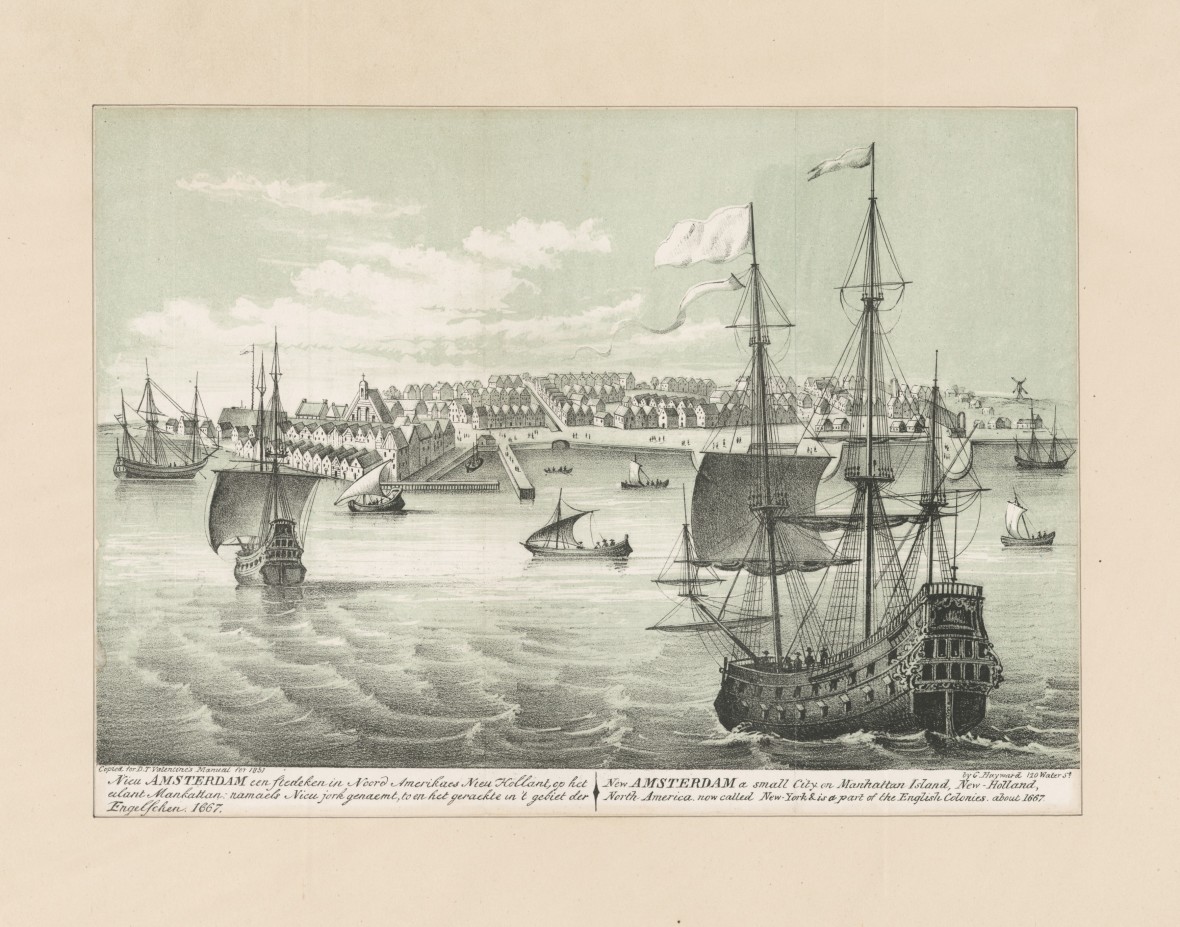
When Dutch explorers and traders came to North America under the banner of the Dutch West India Company in the early 17th century, they set up an outpost at the mouth of the Hudson River on the island that the native Lenape people called Mannahatta. The colonists, under the command of a former merchant named Peter Minuit, struck a deal with the Lenape to purchase the land in 1626, and built houses, windmills and a wall on the former site of a small fort located just south of Bowling Green, for a settlement they called New Amsterdam. Dutch control of the town and the colony of New Netherland at large ended in 1664, when four English warships entered the harbor and commanded the inhabitants to surrender, which they did without a fight. The new owners of the colony renamed both it and the town “New York.”
Under British rule, New York grew substantially, but the center of the city remained at the bottom of the island, where merchants, markets (including slave markets) and shipping companies set up shop. The Financial District also became the home of the colony’s nascent newspaper industry, and the site of the landmark libel trial of publisher John Peter Zenger, held at the-then City Hall (now Federal Hall) on Wall Street.

Post-Revolution, New York briefly served as the new nation’s capital, with the government seated at Federal Hall. But while that didn’t hold, Wall Street did become the heart of the country’s financial system with the establishment of the New York Stock Exchange in 1792. Banks, insurance companies, and other monetary institutions soon followed, and over the course of the 19th century, the expansion of the American economy made the Financial District synonymous with money and power. And with that came the construction of skyscrapers that would define and dominate the skyline of both the neighborhood and the city to this day.
Here are our top picks for what to see and do in the neighborhood.
1. HISTORICAL SPOTS
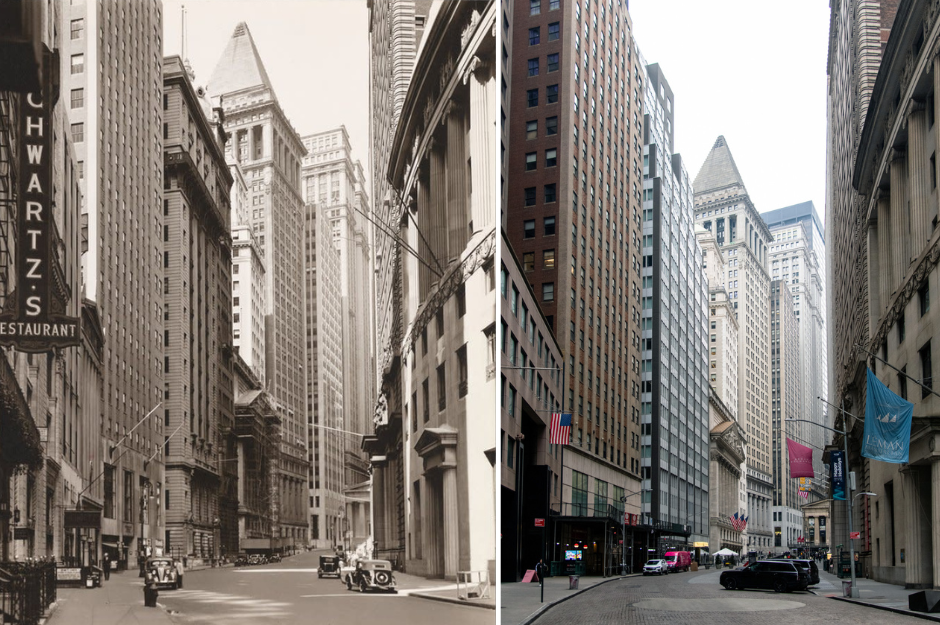
The Financial District is one of the few parts of New York where you can still find pieces of the city's past — literally in some cases. For example, if you head to 85 Broad Street, at the corner of Broad and Pearl Street, and walk north on Pearl, you'll find some of the only existing remnants of 17th and 18th century New York buried under glass: the foundations of a tavern, an old cistern, and the outline of the Dutch stadt huys (or town hall).
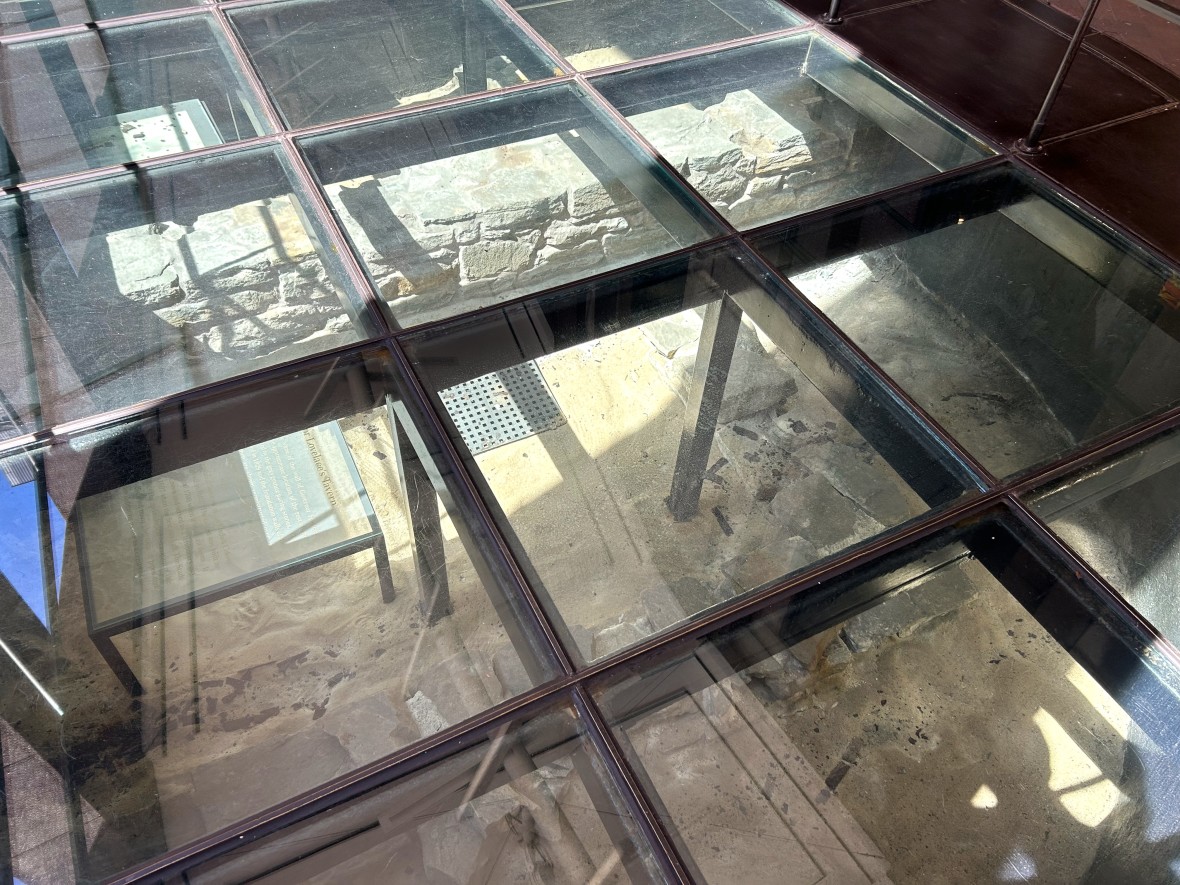
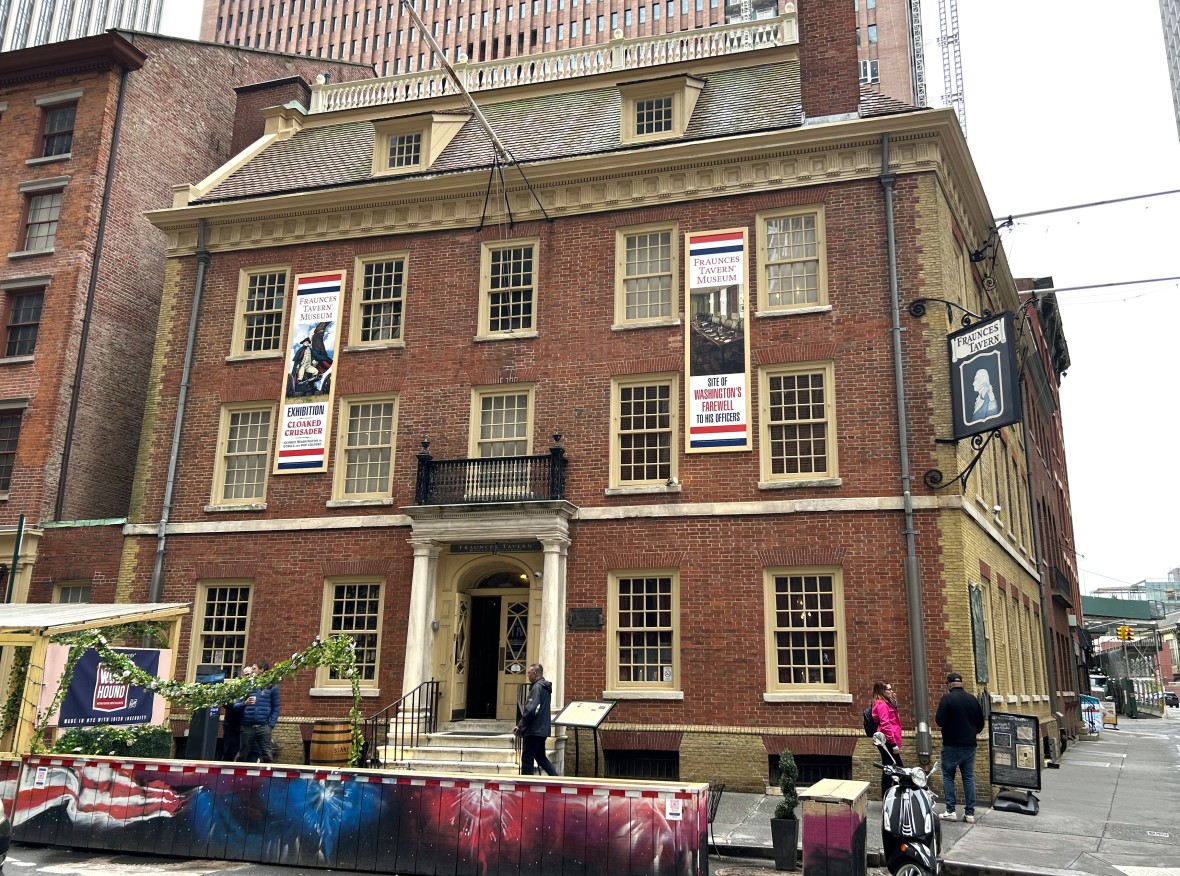
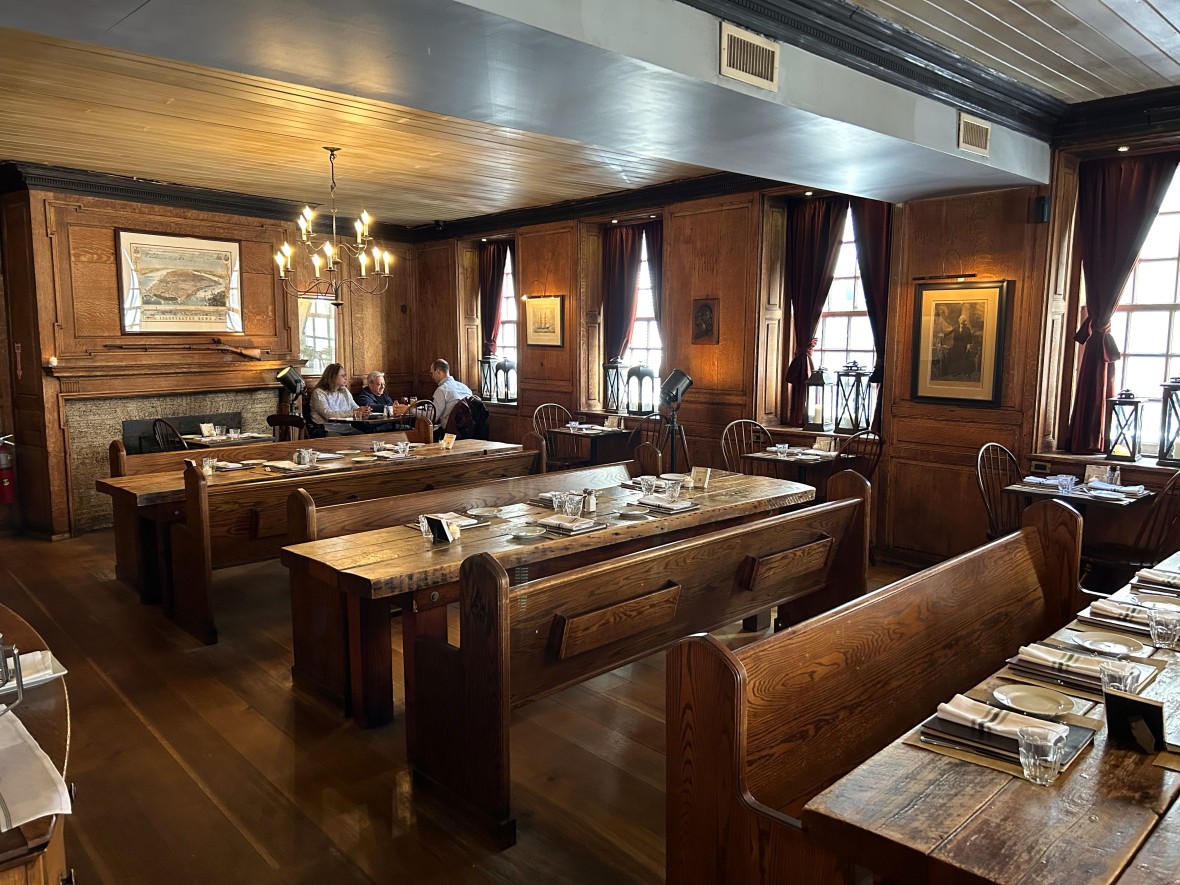
Take a look across the street and you’ll see Fraunces Tavern (54 Pearl St), the oldest bar and restaurant in New York. Founded in 1762, it was where George Washington said goodbye to his officers at the end of the Revolutionary War, as the venue for his farewell dinner on December 4th, 1783. You can get your own meal there or check out the museum on the second and third floors.
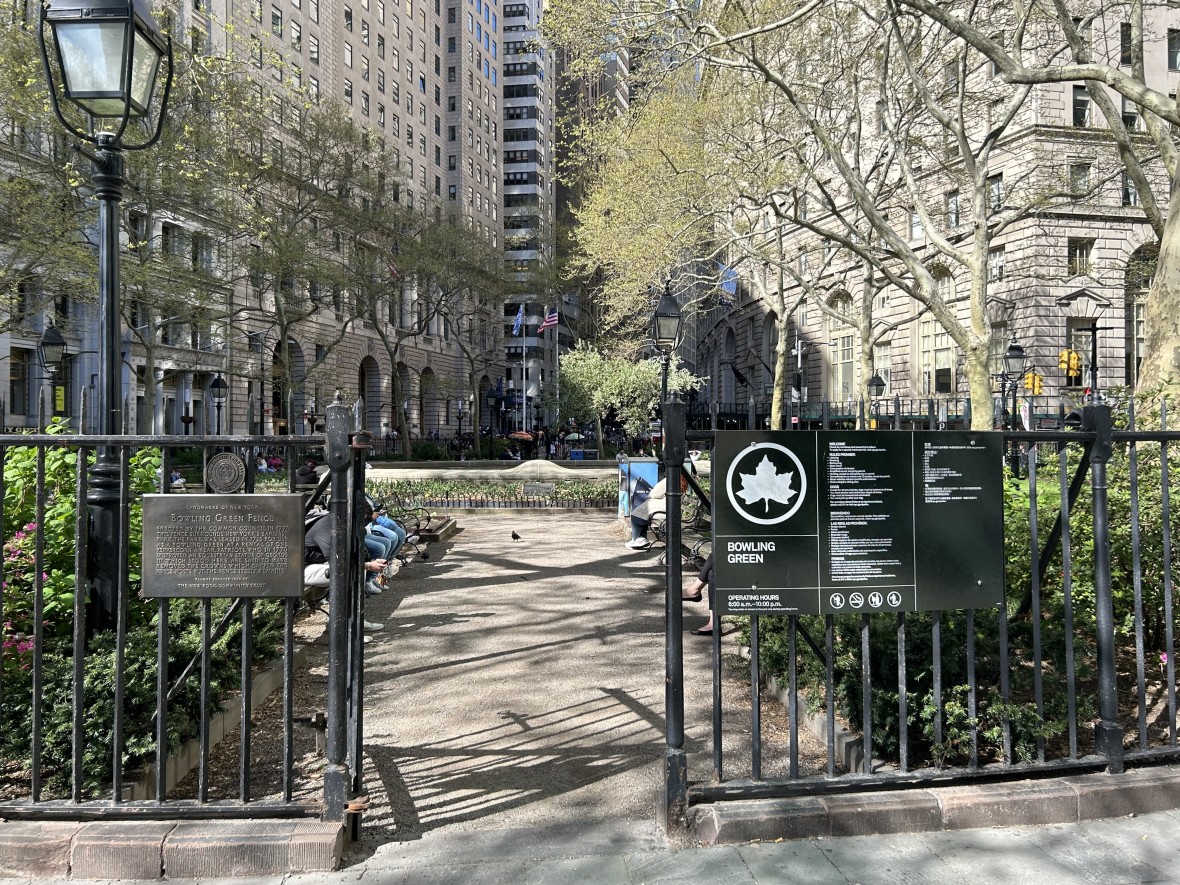
Bowling Green was designated a park by the English in 1733, making it the oldest in New York, and still boasts its original cast-iron fence. Its name comes from its purpose: as a manicured green on which people could play lawn bowling. In 1770, British authorities erected a two-ton statue of King George III there, but it didn’t last long; following a public reading of the Declaration of Independence at Federal Hall on July 9th, 1776, locals rushed the park to tear down the statue, which was then melted down and used to make ammunition.
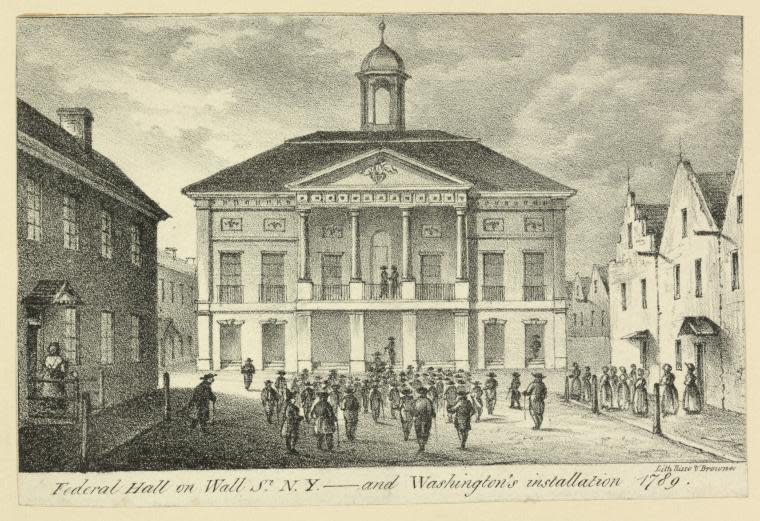
In a plaza opposite the New York Stock Exchange is the aforementioned Federal Hall (26 Wall Street), site of the colonial City Hall, Zenger's libel trial, the first meeting of the post-Revolutionary Congress, and Washington’s swearing in as the nation’s first president on April 30th, 1789. The original building was demolished in 1812; the current Greek Revival structure was erected in 1842 and turned into a memorial nearly a century later.
The history of the American financial system began on Wall Street with the Buttonwood Agreement of 1792, when 24 stockbrokers, in response to a market collapse that year, signed a document creating an organized securities trading business and, by extension, the stock exchange. So named because it was allegedly signed underneath a buttonwood tree (also known as an American sycamore) at 68 Wall Street, in reality, it was likely agreed to at the Tontine Coffee House at the corner of Wall and Water Street.
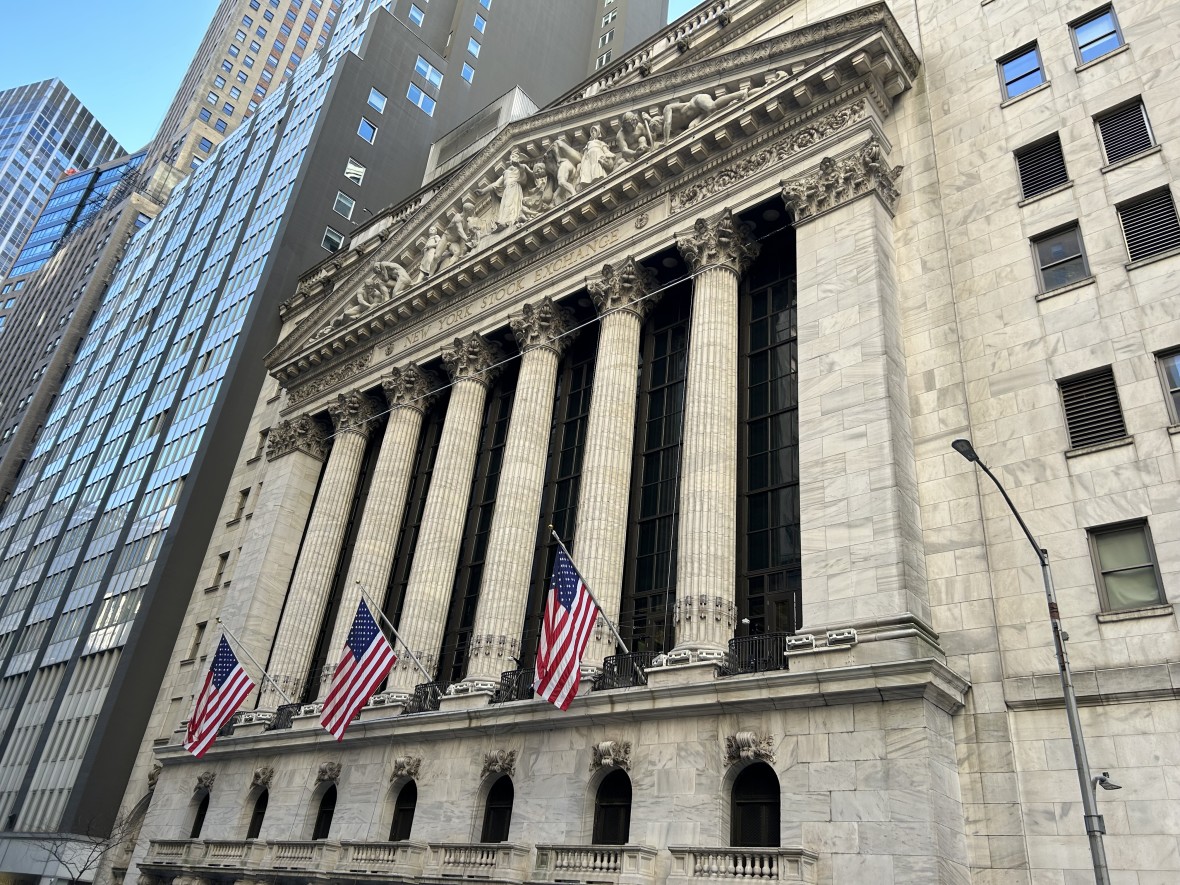
Once the unofficial home of the stock exchange, the Tontine is long gone, having been demolished in 1905, but in its place is one of the city’s most iconic buildings: the New York Stock Exchange (18 Broad St). Opened in 1903, the Classical Revival structure hosts the trading floors for the NYSE, where members buy and sell shares from 9:30 a.m. to 4 p.m., Monday to Friday. The building is closed to tourists, but you can still admire the architecture from outside.

There are a handful of other historically significant buildings on Wall Street. At 48 Wall Street, you can find the former home of the Bank of New York & Trust Company; 55 Wall Street right nearby is the former National City Bank Building, built in 1842. And there's also 23 Wall Street, a squat four-story neoclassical building that was once the headquarters of J.P. Morgan & Co., built in 1914. It still bears scars on its exterior walls from a bomb that exploded on Wall Street in 1920, killing 38 people; the company intentionally left the damage unrepaired in defiance of the attackers, who were never identified.

While you're on Wall Street, by the way, take a peek down at the street itself, and you'll notice small wooden blocks in the middle of the road. Those are markers that were placed there in 2009 to denote the path of the original Dutch wall that ran there in the city's earliest days.
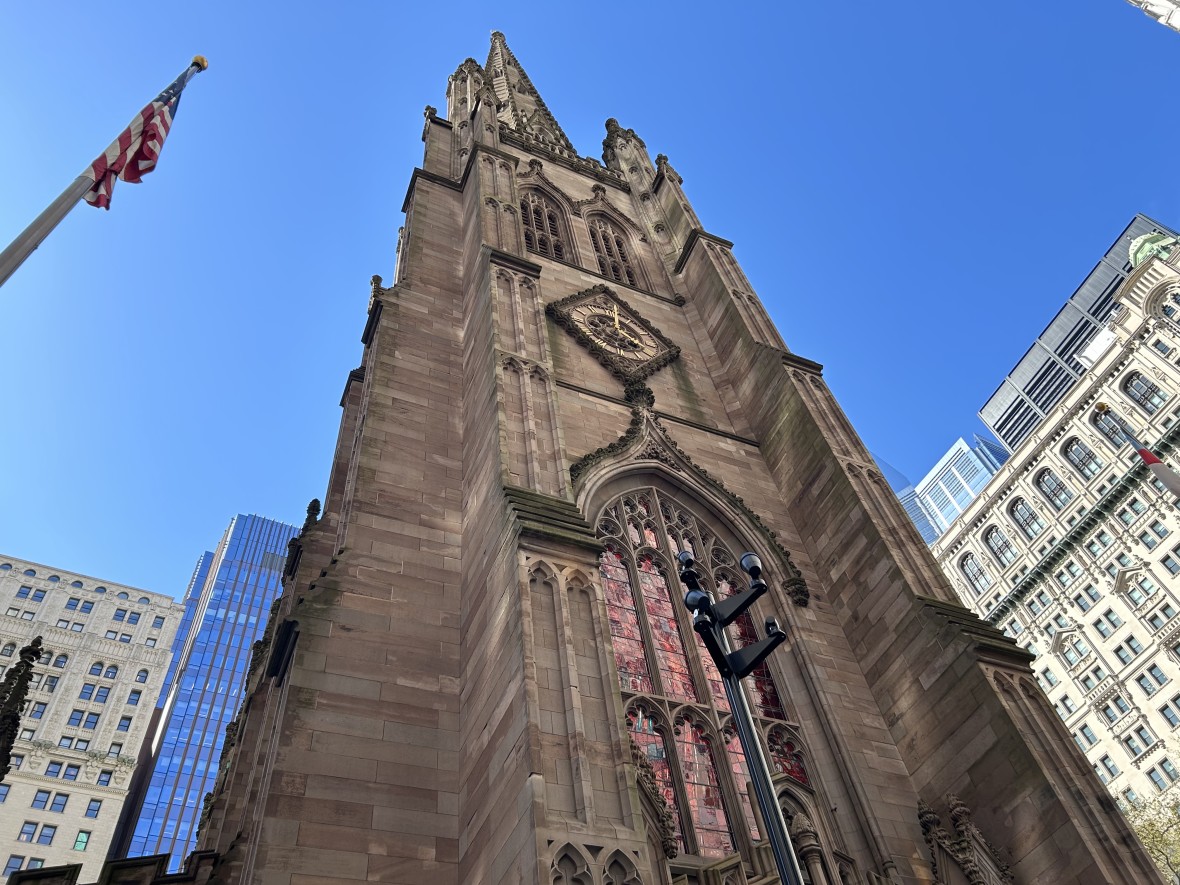
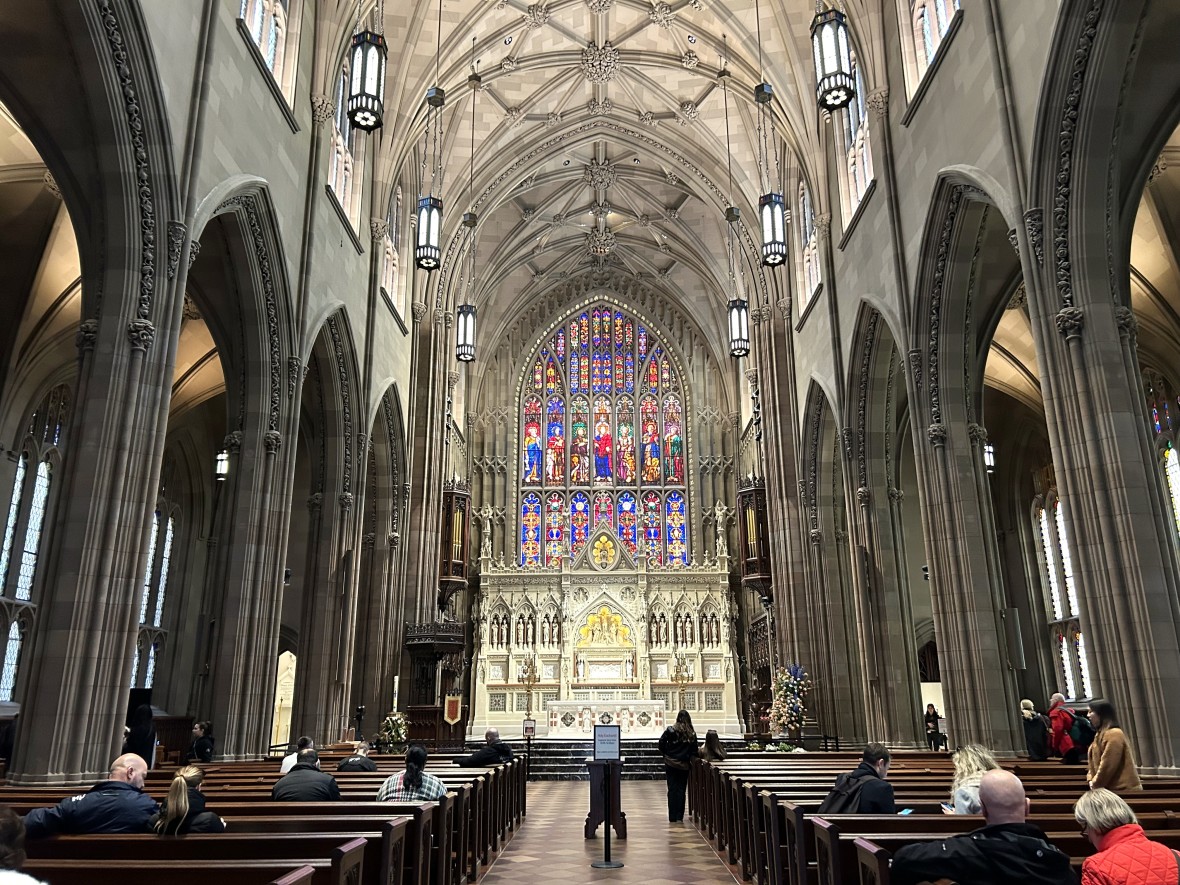
Across Broadway stands Trinity Church (89 Broadway), a Gothic Revival Anglican church erected in 1846 that was once the tallest building in not just New York City but also the United States. This is the third iteration of Trinity Church; the first, built in 1696, was destroyed in the Great New York City Fire of 1776; the second, where Washington, Alexander Hamilton, John Jay and other notable early Americans worshiped, was torn down in 1839. Hamilton, his wife Elizabeth, sister-in-law Angelica, and eldest son Philip are buried in the churchyard, as are Revolutionary War general Horatio Gates and steamboat inventor Robert Fulton.
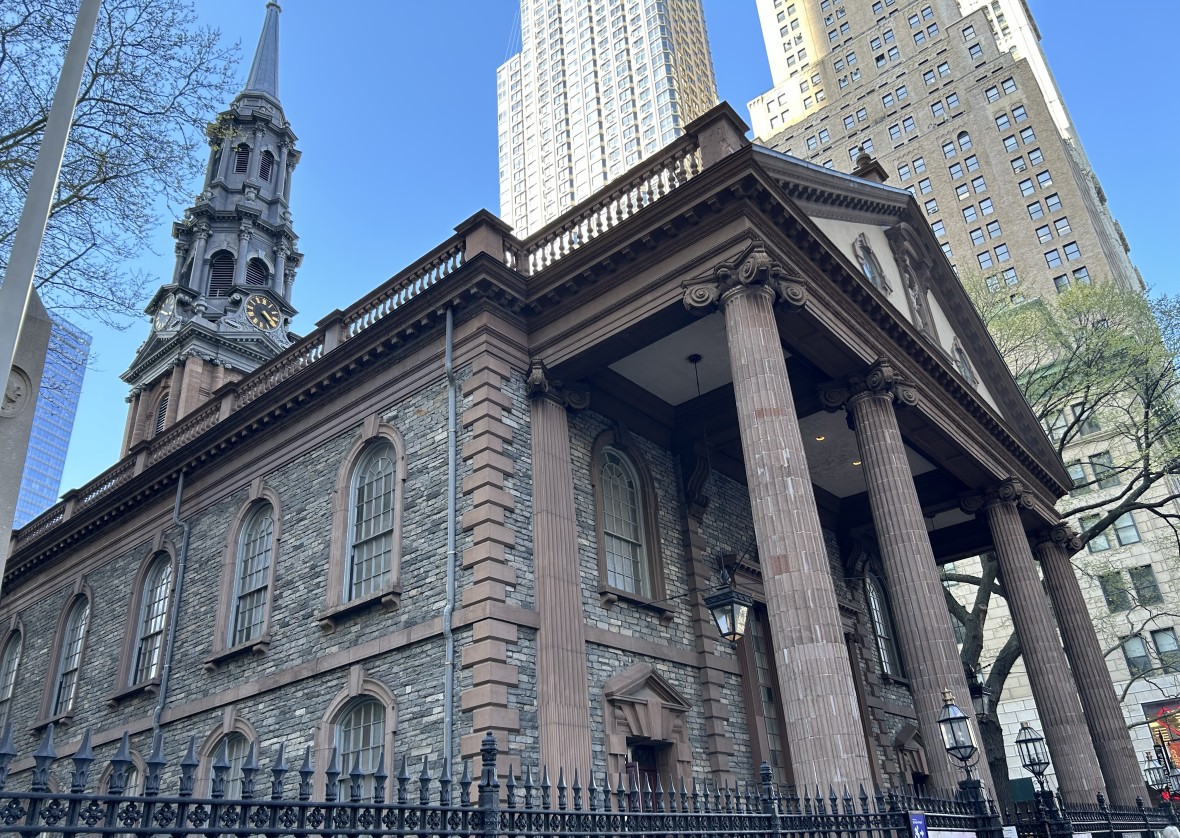
A few blocks north of Trinity Church, just beyond the Fulton Street subway station, is St. Paul’s Chapel (209 Broadway), built in 1766 in the Georgian style. Washington attended mass here following his inauguration in 1789 and was a regular parishioner for the next two years. But St. Paul’s is probably most famous as a rest and respite space following the September 11 attacks; despite the overwhelming destruction caused by the collapse of the Twin Towers, St. Paul’s, which is across the street from the original World Trade Center site, suffered no damage whatsoever. For eight months after the attacks, volunteers would serve meals and offer counseling there to first responders and construction workers.
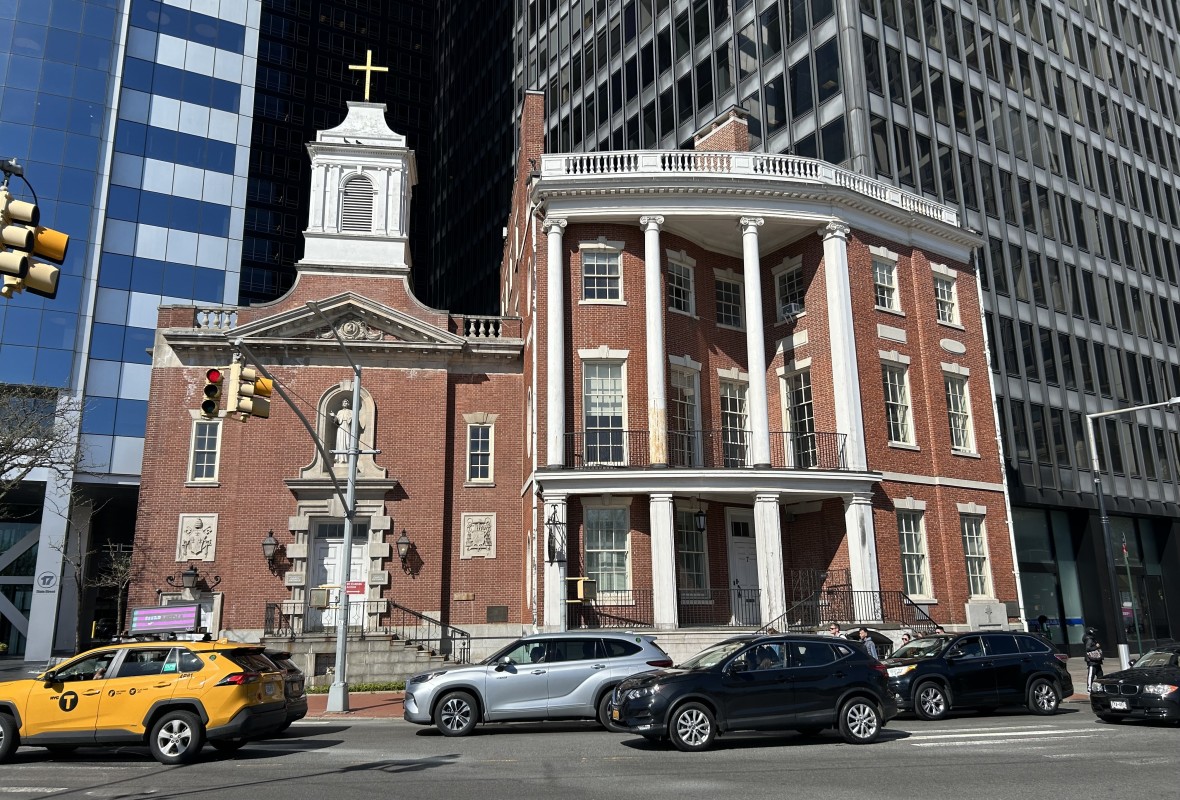
New York City’s history is heavily influenced by Irish immigration, and two sites in the Financial District pay tribute to those who crossed the ocean to come here. Opposite Battery Park, you’ll find the James Watson House (7 State St), which served as a lodging house for Irish women and girls who had come to the United States unaccompanied. Over in Battery Park City, meanwhile, is the Irish Hunger Memorial, commemorating the victims of the Great Famine, which resulted in the deaths of over a million people in Ireland between 1845 and 1852 and prompted an enormous wave of Irish emigration to New York.

Fittingly for the Financial District, the neighborhood is home to the New York Federal Reserve Bank (33 Liberty Street), the largest federal reserve bank in the country and home to the world’s largest gold storage reserve (as memorably depicted in Die Hard with a Vengeance). Opened in 1914, the bank’s underground depository contains over 6,000 tons of gold bullion — more than 500,000 gold bars worth close to $200 billion. Unfortunately, it isn't open to the general public, so you'll have to figure out a different way to pull off the heist of the century.
2. GRAB A BITE AND DO SOME SHOPPING

The Financial District, as it has since its inception, boasts plenty of shops and restaurants — more than you could visit in any one stay. But at the South Street Seaport (19 Fulton St), you can find both in one convenient space.
Once one of the busiest markets in the city, the Seaport fell into disuse by the 1930s and was revamped as a historic landmark and commercial area in the 1970s. Today, it plays host to a number of shops, including an outpost of the excellent local independent bookstore McNally Jackson, and over two dozen places to eat, most located on Pier 17. There's also a barbershop, a movie theater, a boxing gym, art galleries, a tailor and a shoe repair store, the Lawn Club (offering bocce and shuffleboard), and even a printing office if you want to create some Thomas Paine-style pamphlets to hand out on the street.
On the roof of Pier 17 is a performance space called, unsurprisingly, the Rooftop at Pier 17, which hosts concerts (and a Brooklyn Bridge view) all spring and summer.
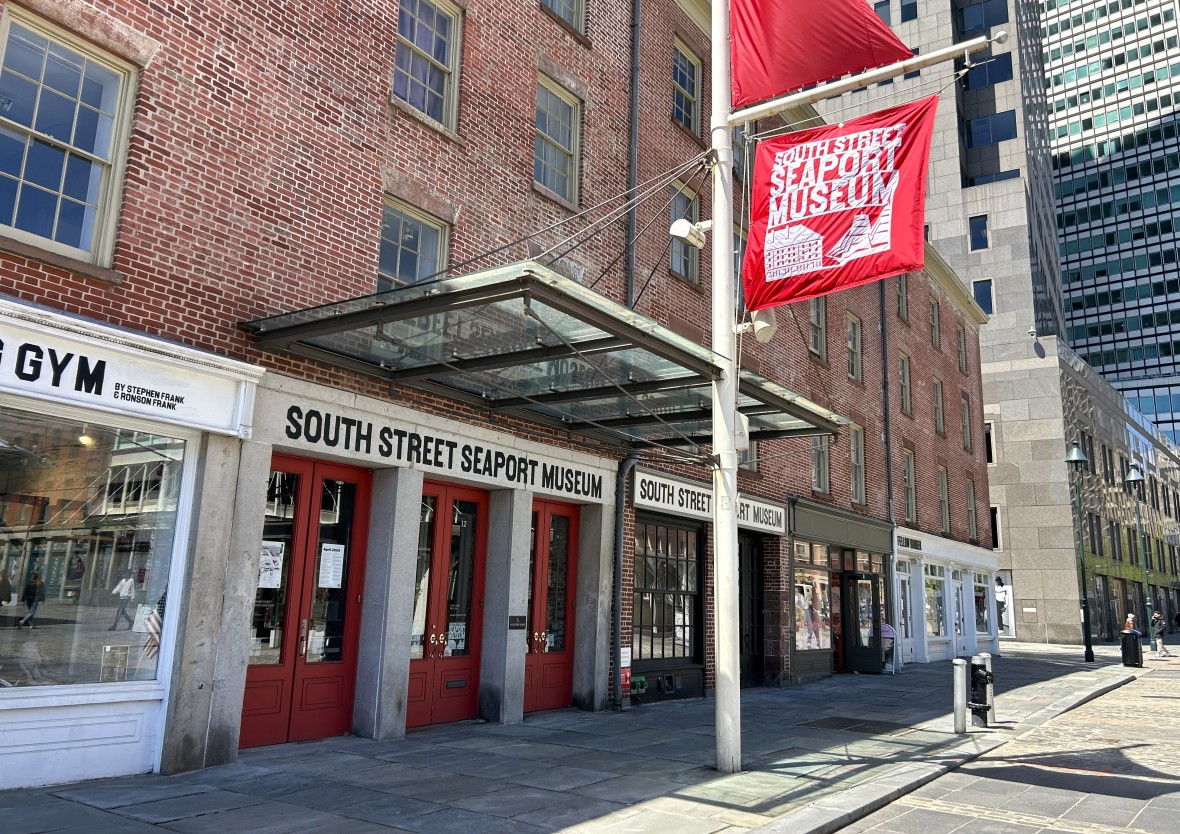

There's also plenty to learn and see amidst the shopping. The South Street Seaport Museum has thousands of artworks and artifacts from 19th century New York in its collection, as well as 2,400 model ships and assorted naval ephemera. They also have five moored ships, including two schooners dating to the 1890s, a lightship from 1908, and the city's last surviving wooden tugboat.
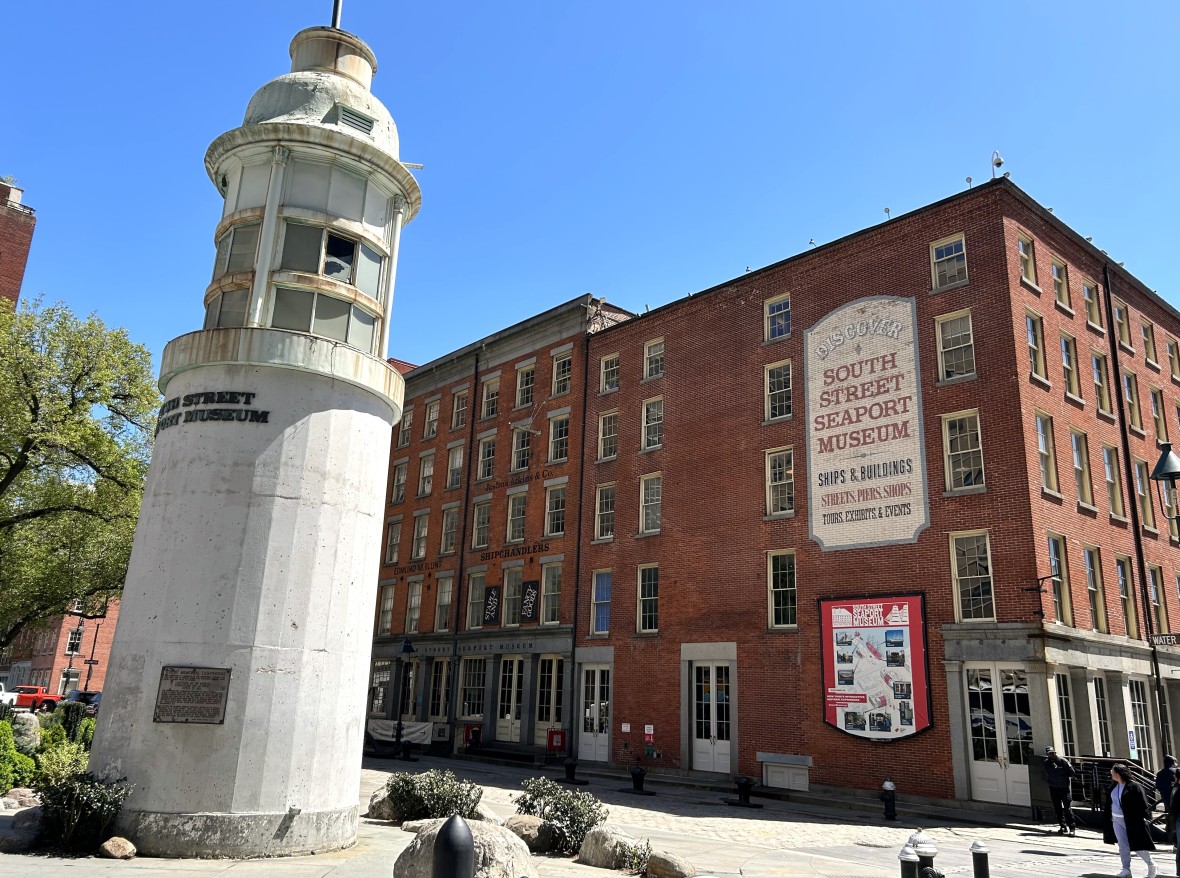
Make sure too to check out the Titanic Memorial. A 60-foot-tall lighthouse, it was dedicated in 1913 to the victims of the disaster and stood on the roof of the Seamen's Church Institute of New York and New Jersey until 1967; a time ball on top of it would rise and fall at noon every day as a signal to the ships in the harbor. Relocated to the Seaport after the Seamen's Church moved uptown, it now stands as a silent reminder of one of the world's greatest naval tragedies.
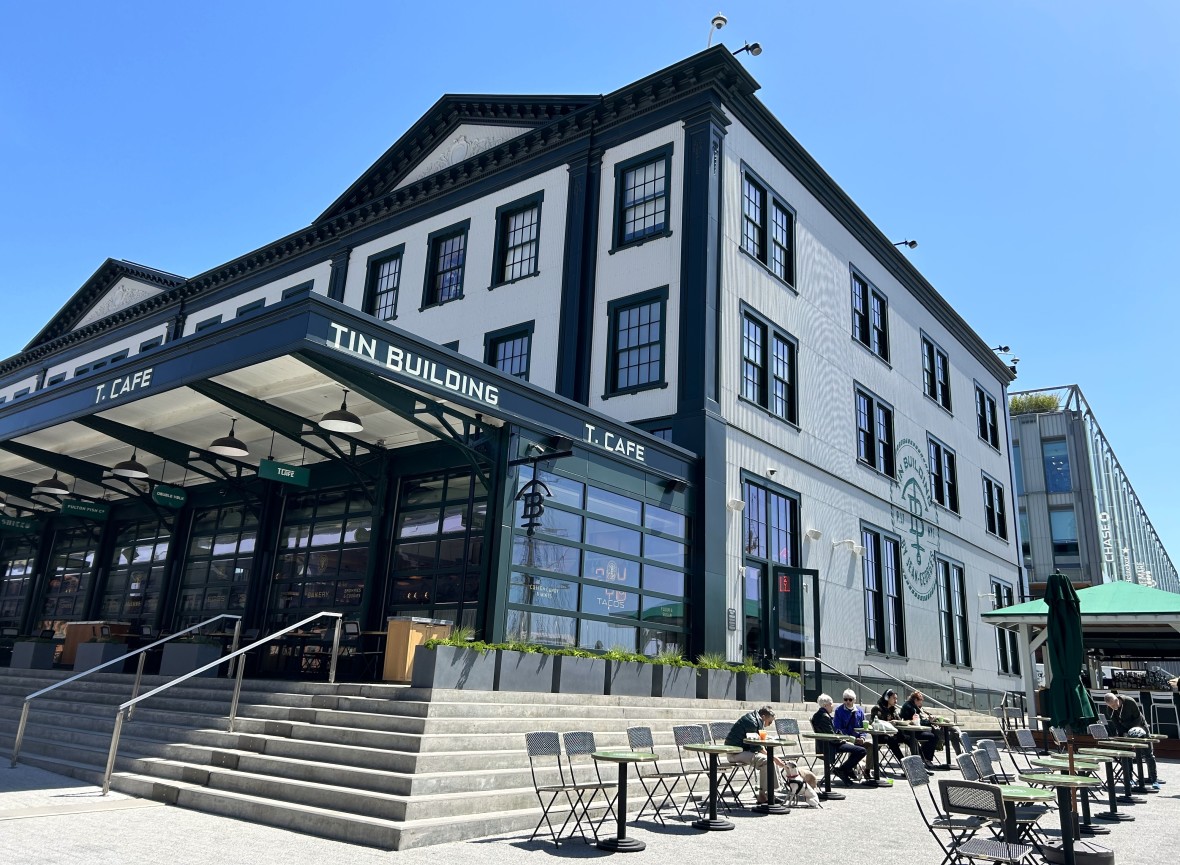
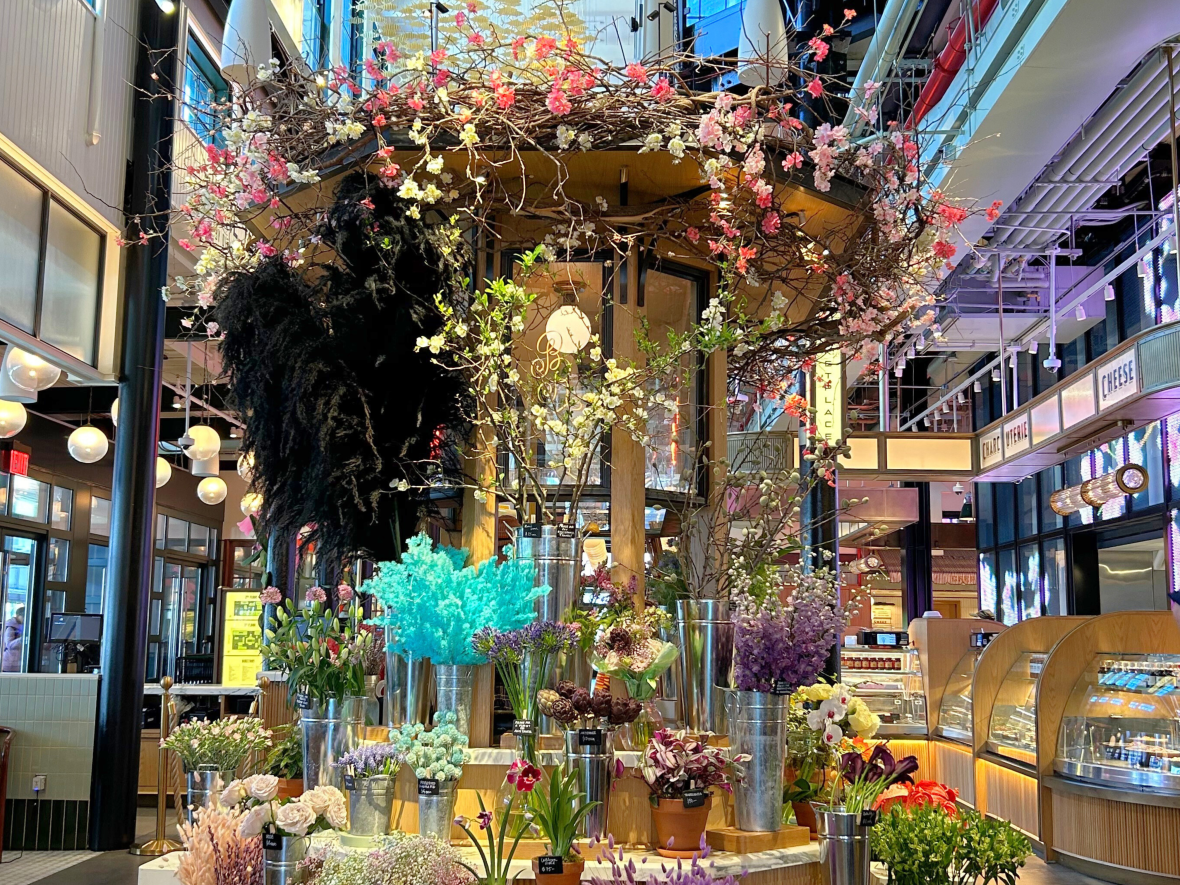
If you're hungry, head to Tin Building (96 South St), a combination food hall-market located on Pier 17. The structure itself dates back to 1907 and now hosts 11 restaurants and two bars, ranging from Chinese to crepes to seafood to hamburgers. The latter can be found at Double Yolk, which keeps it classic: a beef patty on a sesame seed bun topped with lettuce, tomatoes, pickles, American cheese, and a spicy secret sauce to tie it all together.

In the heart of the Financial District, you can find arguably the best Italian sandwiches in the city at Pisillo Italian Panini (97 Nassau St). Their giant menu features over two dozen options, hot and cold, of excellent cold cuts and cheeses. Your reward upon ordering is a true footlong with the heft and weight of one of Aaron Judge’s bats; it might take you a while to finish your sandwich, but you’ll be ecstatic the entire time.
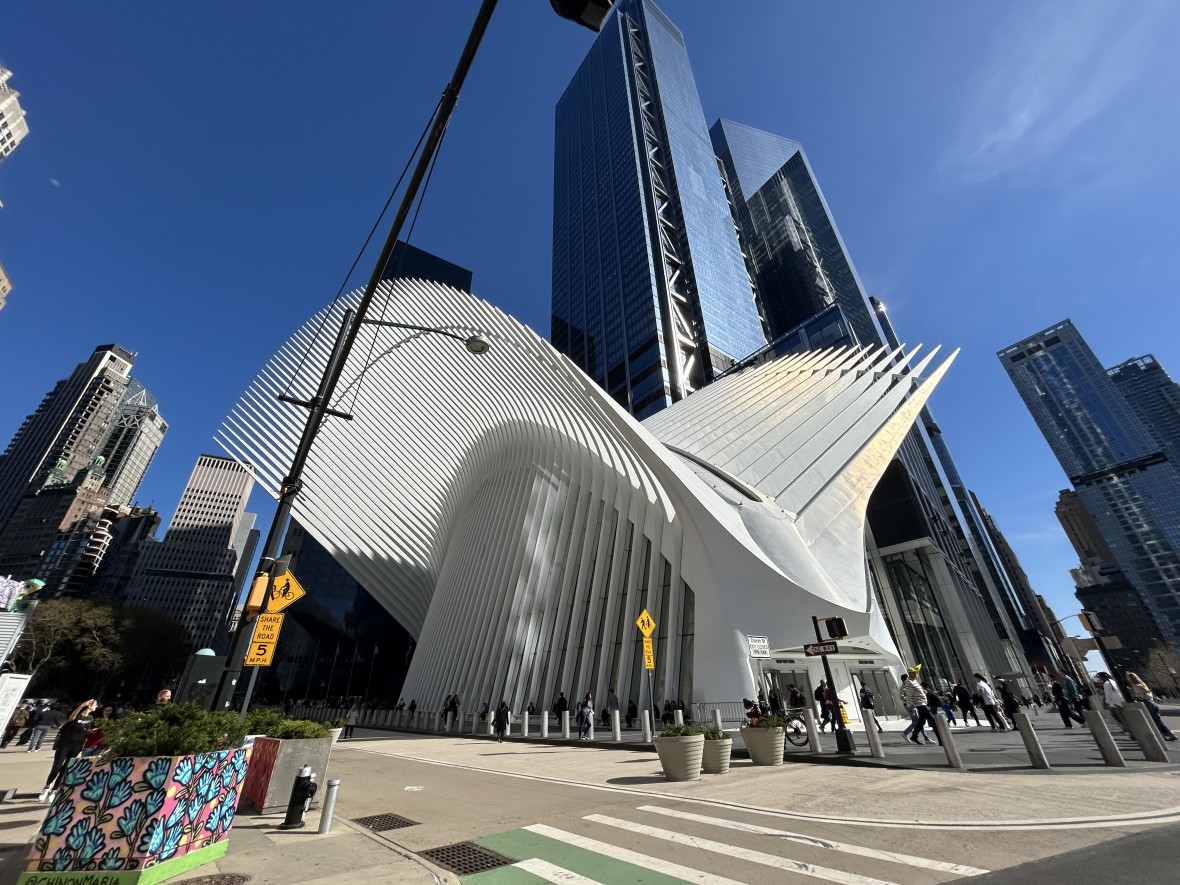
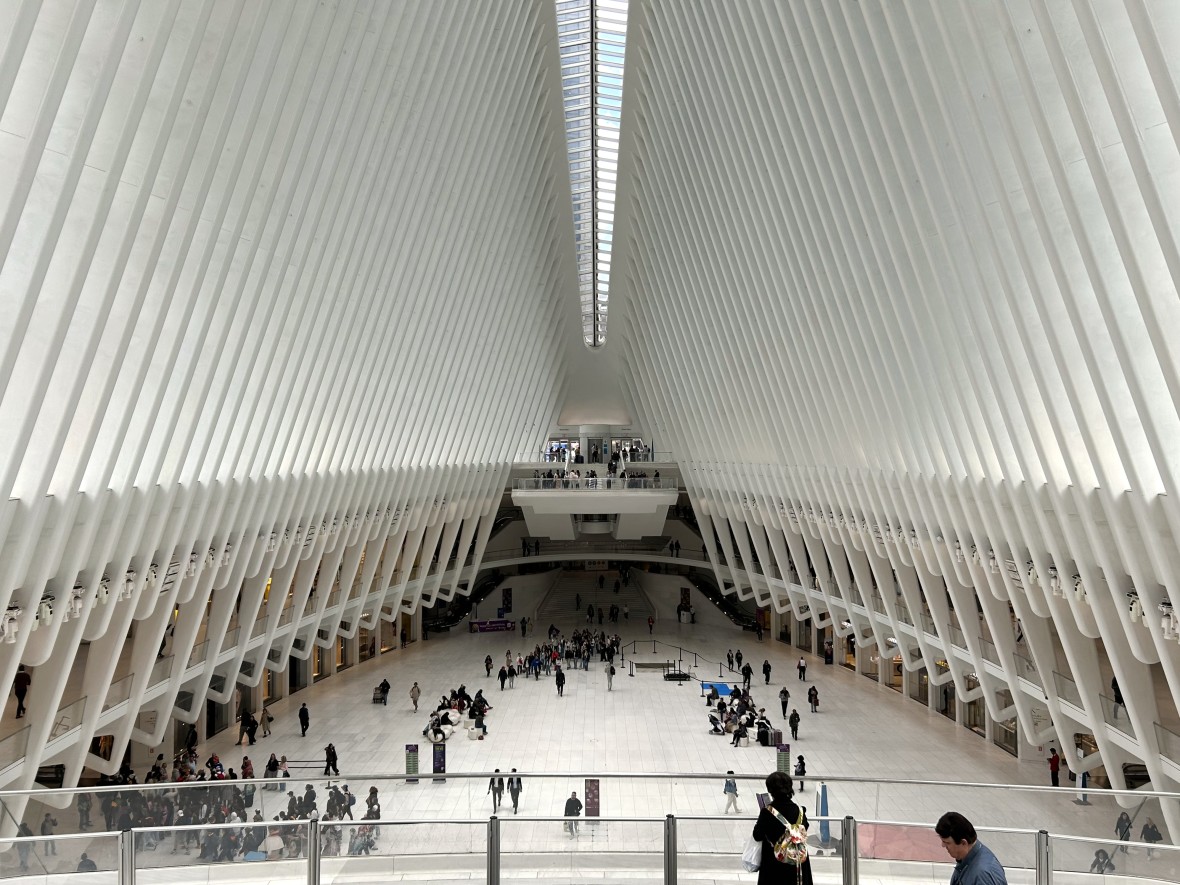
The neighborhood's other giant shopping area is a bit more modern and located almost entirely within the Oculus (70 Vesey St), the transportation hub located at the World Trade Center. Designed by world-famous architect Santiago Calatrava, the controversial structure’s unique design makes it look like the bones of a giant whale splayed out into the sky. Inside, there are over 50 shops ranging from the Apple Store to Kate Spade to Walgreens, plus an assortment of dining options, including Eataly, the combination Italian restaurant and market, and Épicerie Boulud, which serves fresh baked bread and pastries.

What if you want a side of history with your dinner and drinks? As noted above, Fraunces Tavern still serves New Yorkers 250 years after it first opened its doors; they offer pub grub for lunch and dinner. For another equally historic option, there’s Delmonico’s (56 Beaver St), which opened in 1837 as the first fine-dining restaurant in the country. Boasting private dining rooms and a giant wine cellar, Delmonico’s became famous for its steak, as well as being the birthplace of the dishes Baked Alaska, Lobster Newburg, and Eggs Benedict.
Not far from Fraunces Tavern and Delmnico's, you'll find Stone Street, which features a stretch of street closed to vehicular traffic. Instead, you'll find bars and restaurants with seating indoors and out on the cobblestone street, with delightful strings of bulbs hanging above.
3. ADMIRE THE ARCHITECTURE
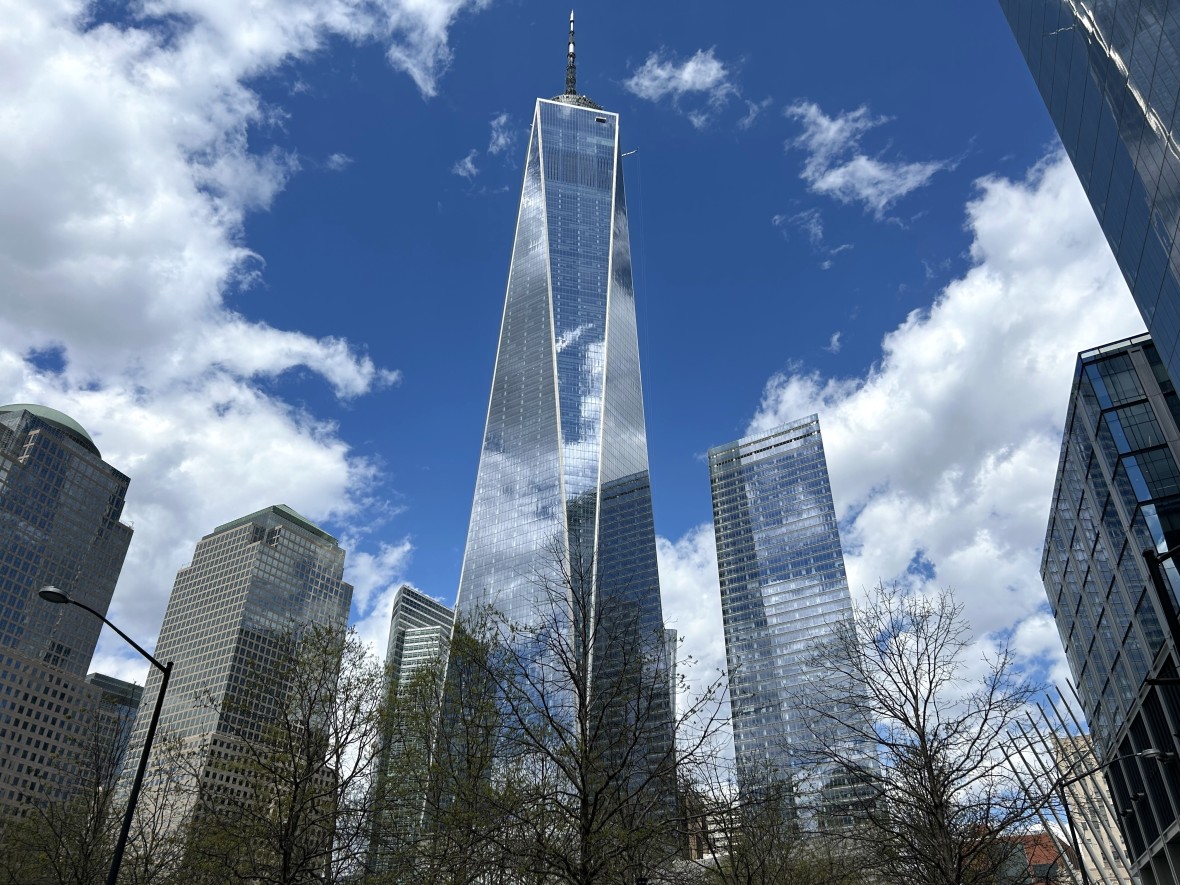
The skyscraper completely changed the look and layout of Manhattan. With real estate at a premium on an island just 2.3 miles wide, the late 19th century saw New York build up instead of out, erecting towering structures first out of stone, then with steel and glass. The construction and style of skyscrapers changed over time, but today, you can see both the earliest and the most modern of the buildings that would become synonymous with New York.
The tallest building in the neighborhood is also the tallest in New York City and in the United States: One World Trade Center (285 Fulton St). At 1,776-feet, it’s the fourth-tallest building in the world, and the observation deck on floors 100-102 gives you a breathtaking view of the city, the rivers, the harbor, and much more.
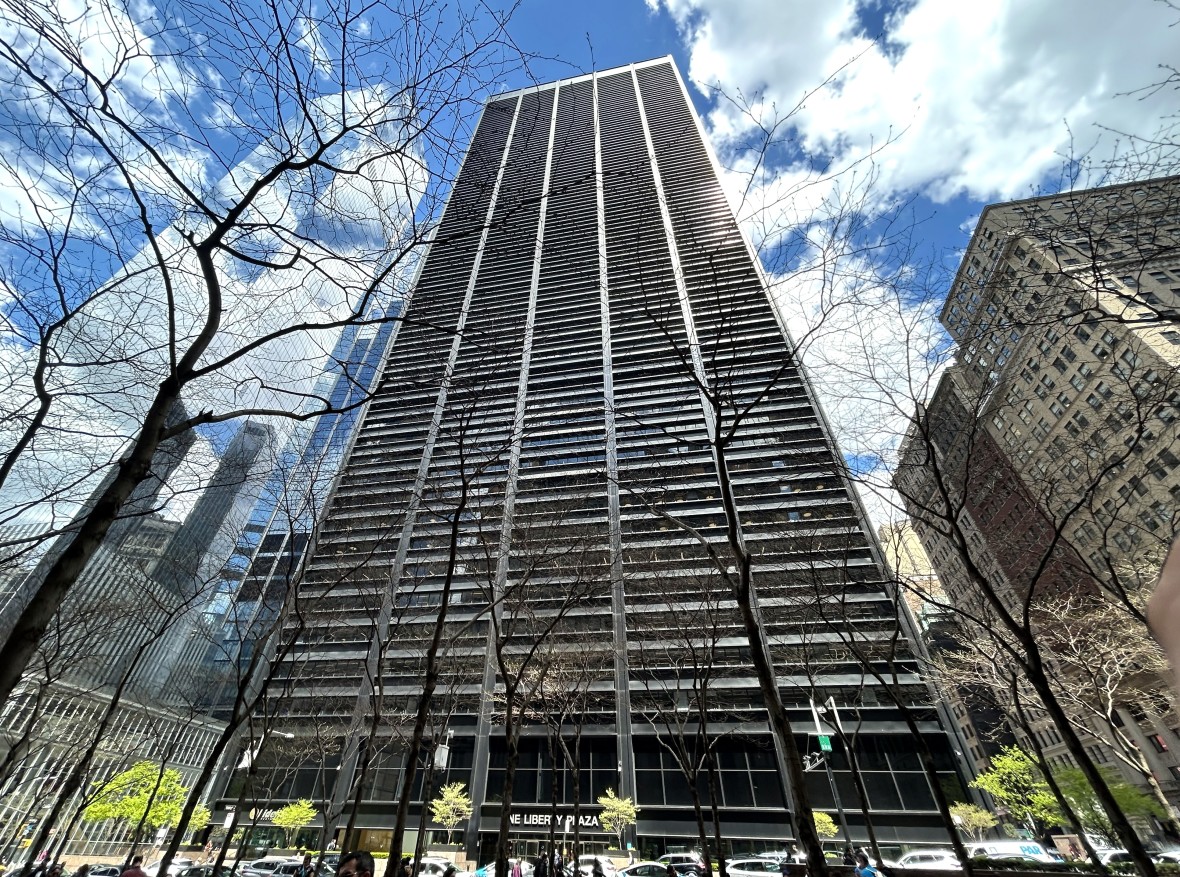
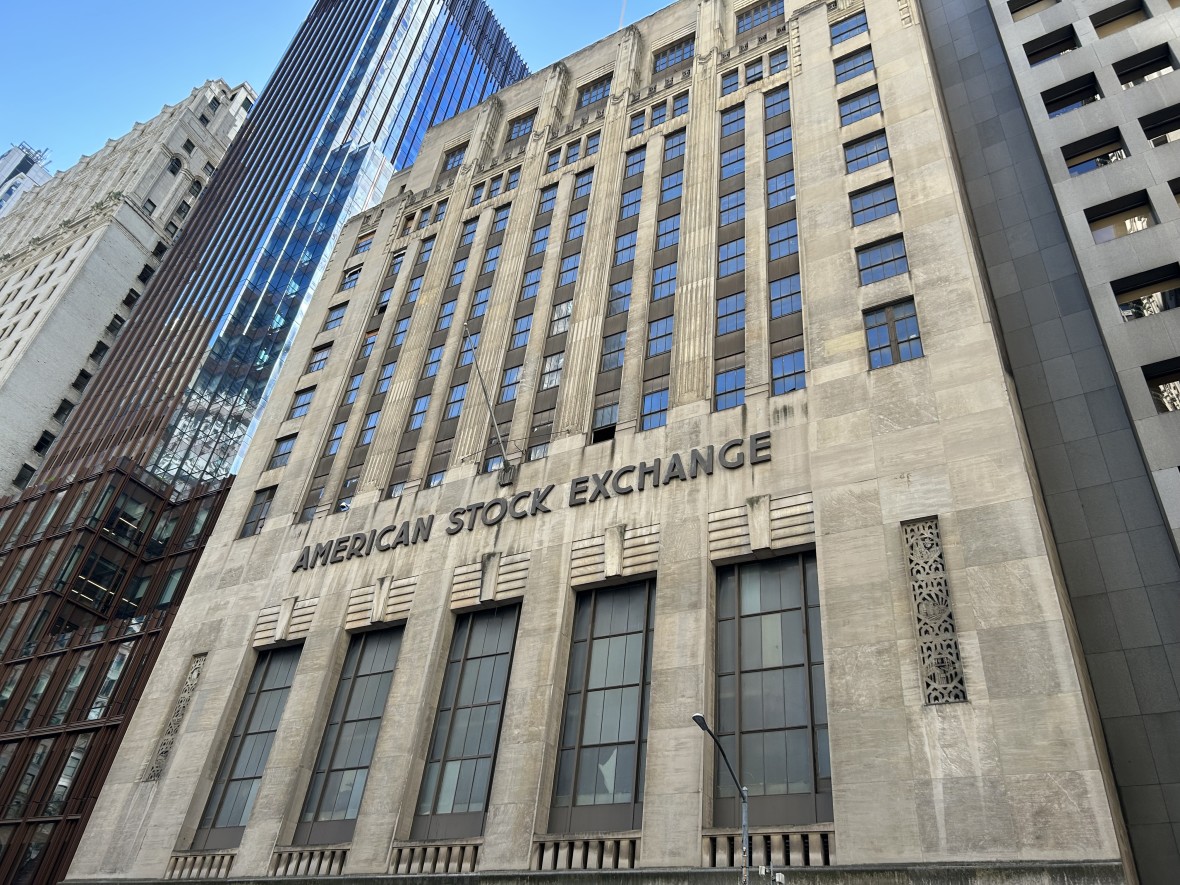
Near the World Trade Center is One Liberty Plaza (165 Broadway), once known as the U.S. Steel Building, a 743-foot-tall International Style skyscraper built in 1973. It sits above Zuccotti Park, home to the Occupy Wall Street protests of 2011, and on the site of the Singer Building, which was the tallest building in the world at 612 feet when construction was completed in 1908, though its reign was a single year; it was demolished in 1969 to make way for One Liberty. Close by on Church Street, meanwhile, is the American Stock Exchange Building (86 Trinity Place), constructed in 1921 and an exemplar of Art Deco style.
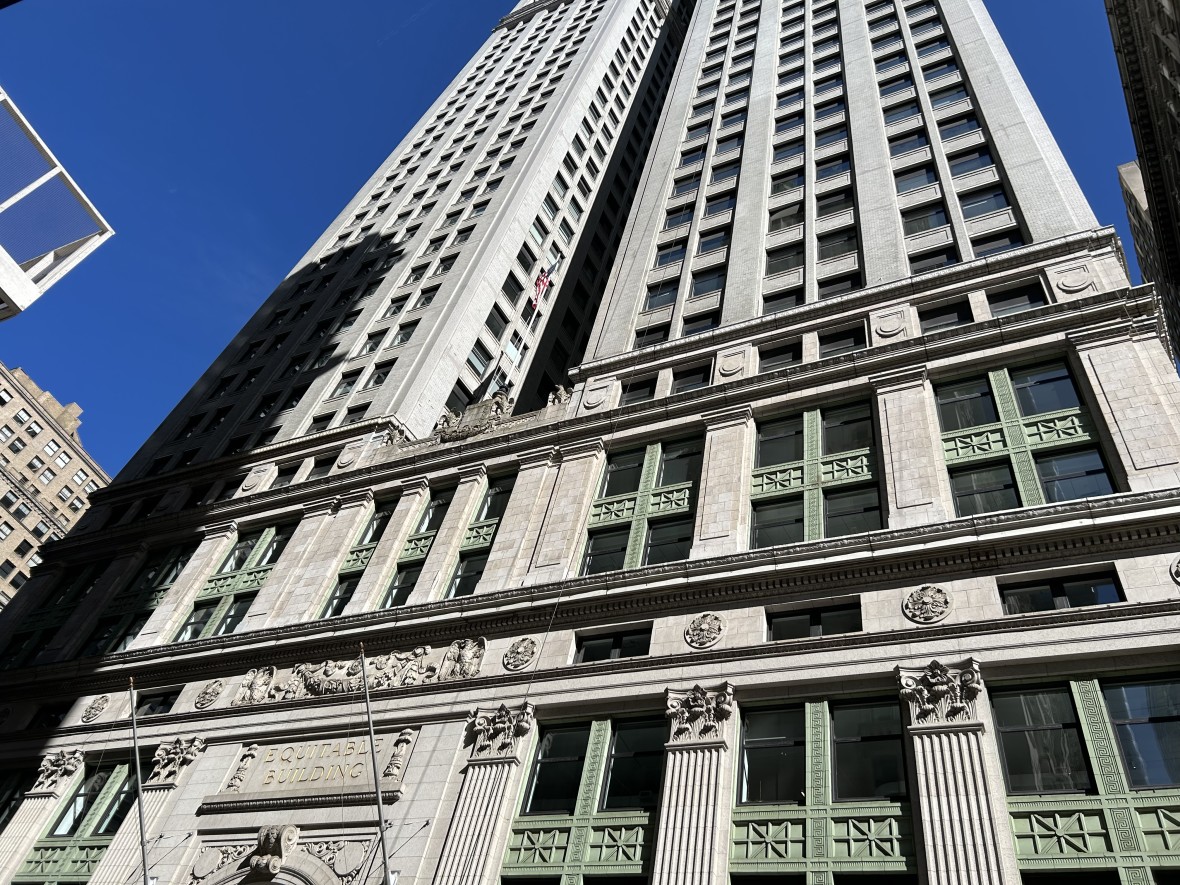
Between Pine Street and Cedar Street on Broadway is the Equitable Building (120 Broadway), which dates to 1915; designed in the neoclassical style, it stands 555 feet tall. The Equitable Building is perhaps most famous, though, for its bulky structure, which cast immense shadow on the street below and prompted significant zoning reform that imposed height limitations and setback requirements on new skyscrapers in order to allow sunlight to reach street level.
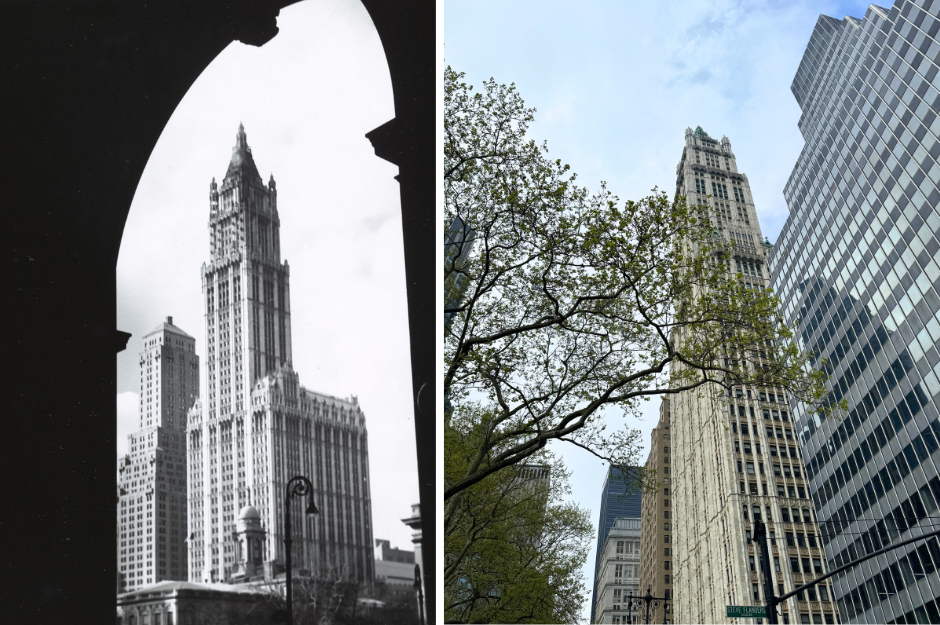
At the northernmost end of the Financial District, you can find one of the most historically significant skyscrapers in the world: the Woolworth Building (233 Broadway). The Neo-Gothic structure, resembling a cathedral stretched out to awe-inspiring heights, opened in 1913 and stood 792 feet, making it the tallest building in the world (overtaking the Metropolitan Life Insurance Company Tower at 24th Street and Madison Avenue) until the construction of the Chrysler Building in 1930.
MORE EXPLORING

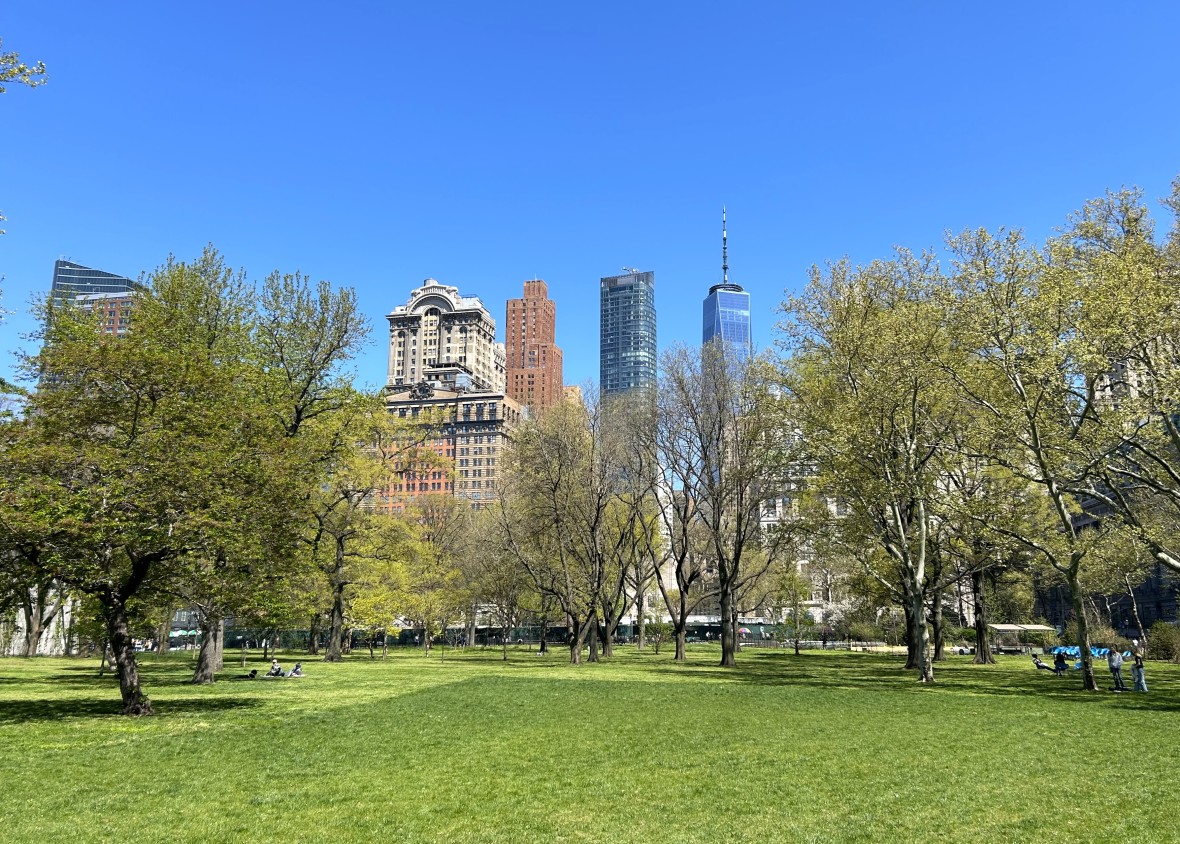
The biggest park in the Financial District sits at the very tip of Manhattan: the Battery. Named for the forts and cannons situated there by the British and then by American forces to defend New York Harbor, the area was turned into a park in the mid-19th century. Today, it’s a 25-acre green space offering expansive views of the Hudson River, Ellis Island, and the Statue of Liberty.
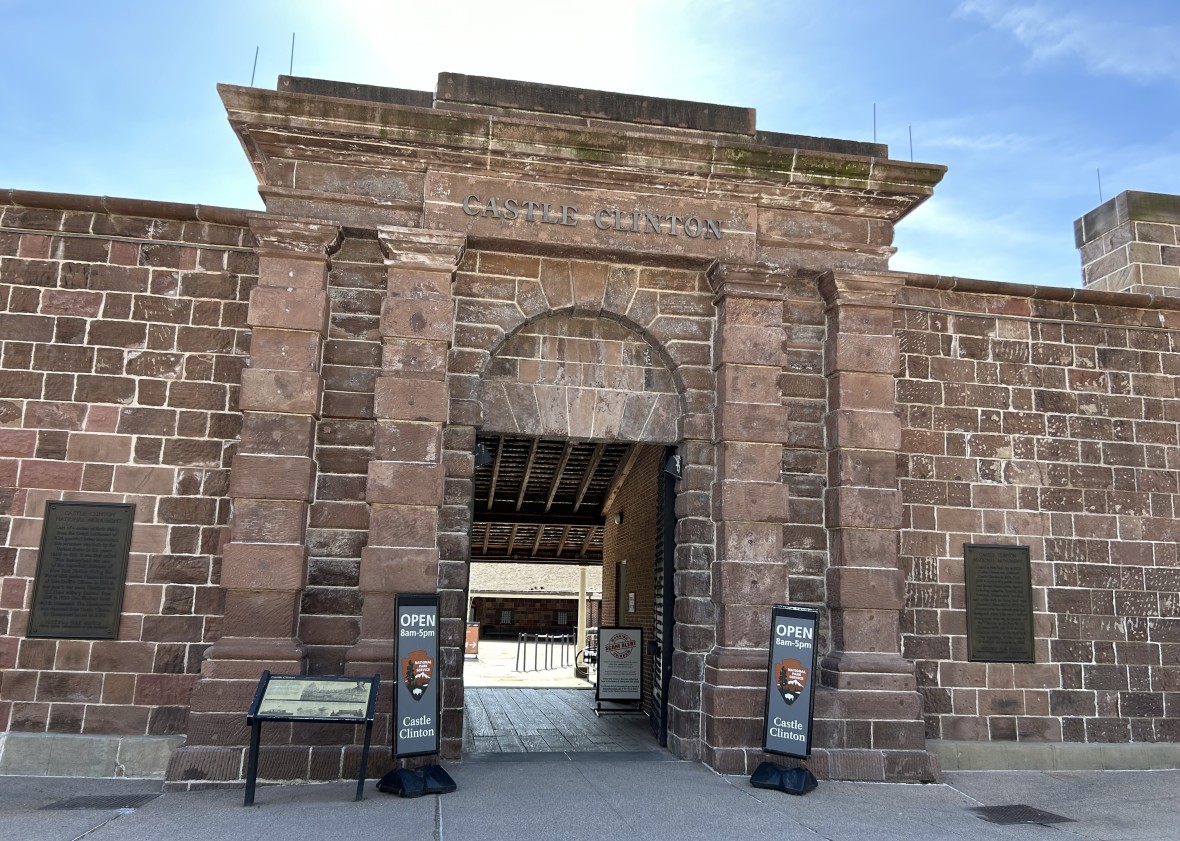
In Battery Park, you’ll also find Castle Clinton, a circular sandstone fort built in 1808 that served as an intake center for immigrants from 1855 until the opening of Ellis Island in 1892, and then as the New York Aquarium from 1896 to 1941. Today, it serves as a small museum and as a place to buy tickets for tours of the Statue of Liberty.
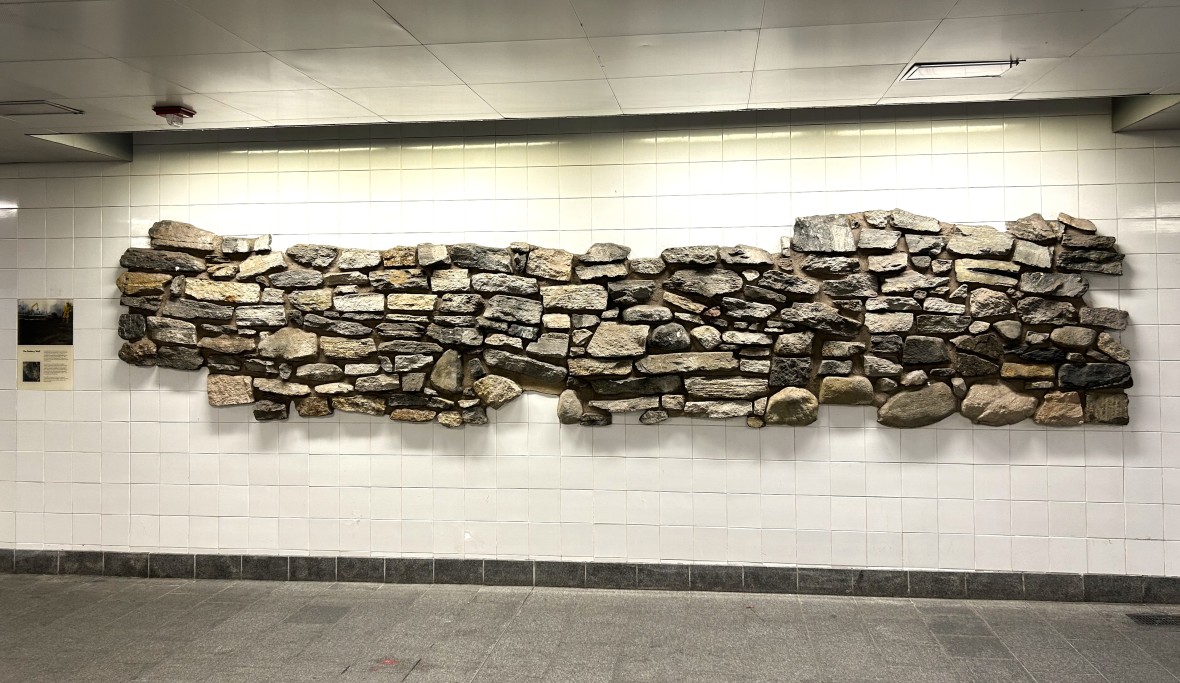
A piece of the original Battery wall, meanwhile, can be seen in the nearby South Ferry subway station; it was discovered during construction work in 2005 and preserved for public viewing. Dating back to 1755, it’s the oldest man-made structure in the city.
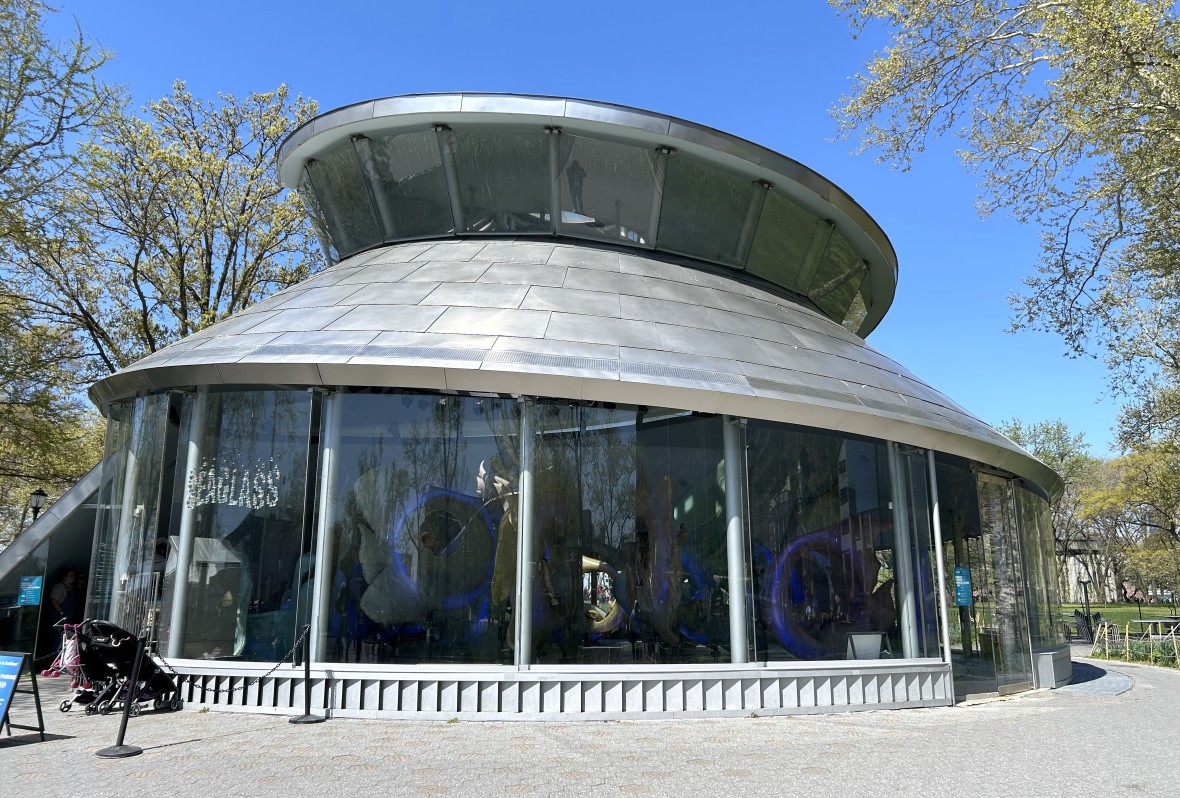
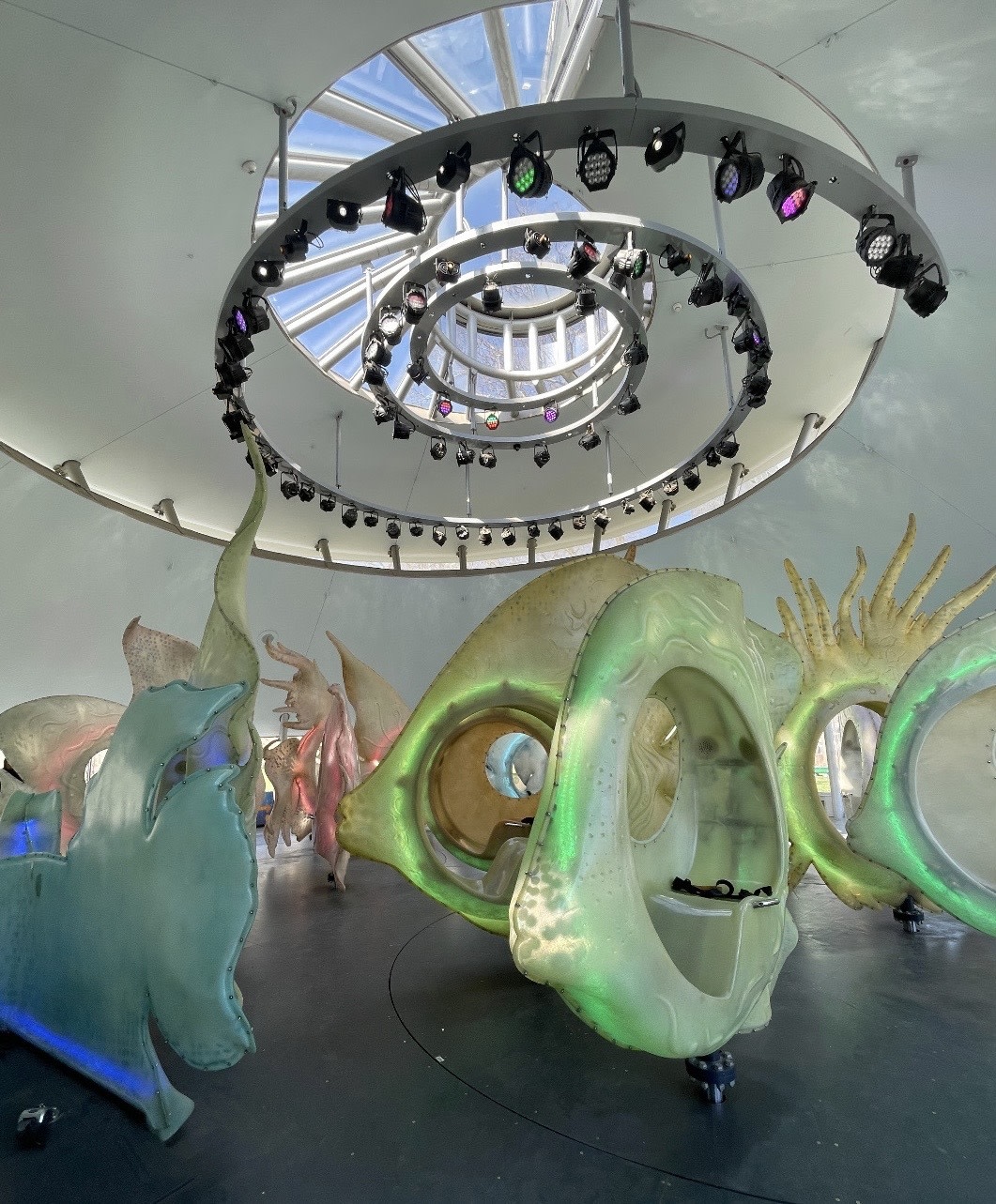
While in Battery Park, take a moment to check out one of the city’s strangest and most whimsical attractions: the SeaGlass Carousel. Opened in 2015, its blue-and-green coloring brings to mind bioluminescent aquatic life in a calm ocean. A ride takes all of three and a half minutes and costs $6.

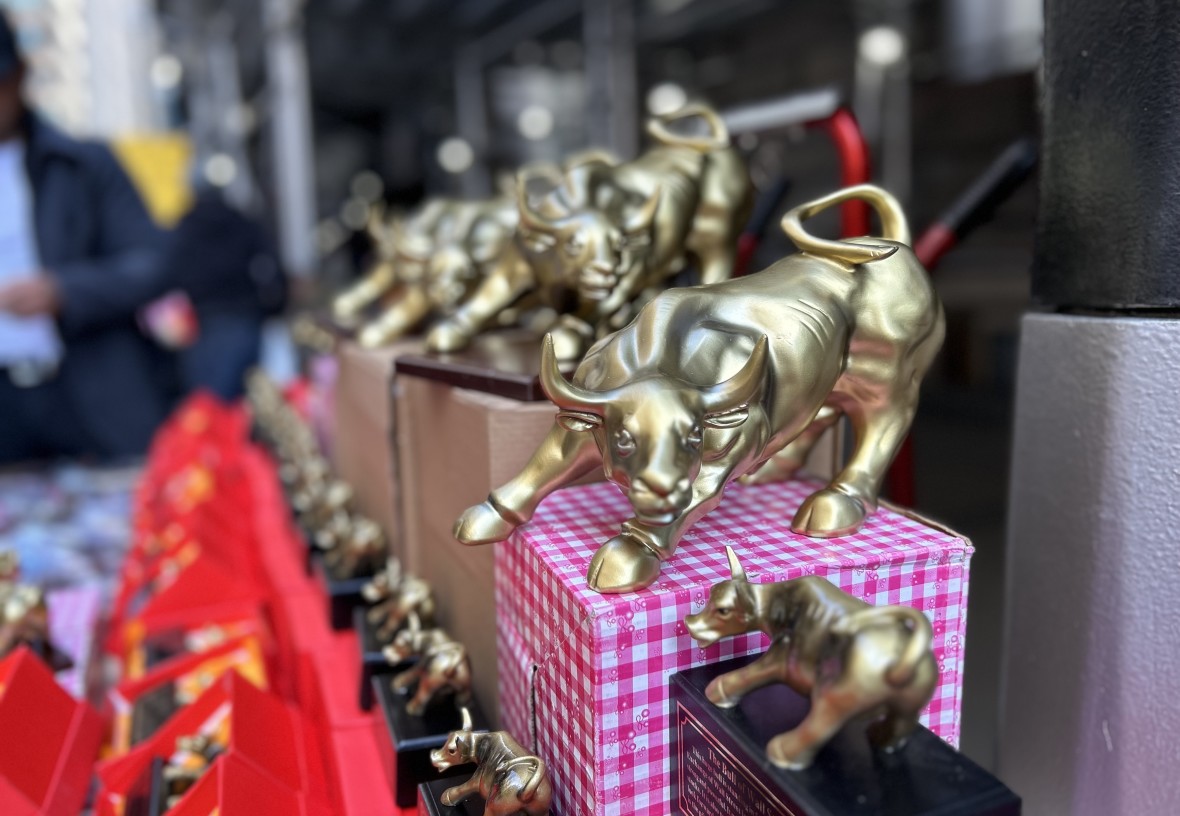
The most popular tourist attraction in the neighborhood is almost certainly Charging Bull, a three-ton bronze sculpture of a bull that sits just north of Bowling Green. Created by Italian sculptor Arturo Di Modica in response to the Black Monday stock market crash of 1987, it was originally installed illegally in the middle of the night on Dec. 14, 1989, in front of the New York Stock Exchange; after being removed the next day, it was moved to its current spot a week later. This piece of guerilla art now draws long lines of visitors, rain or shine, who pose for photos with it.
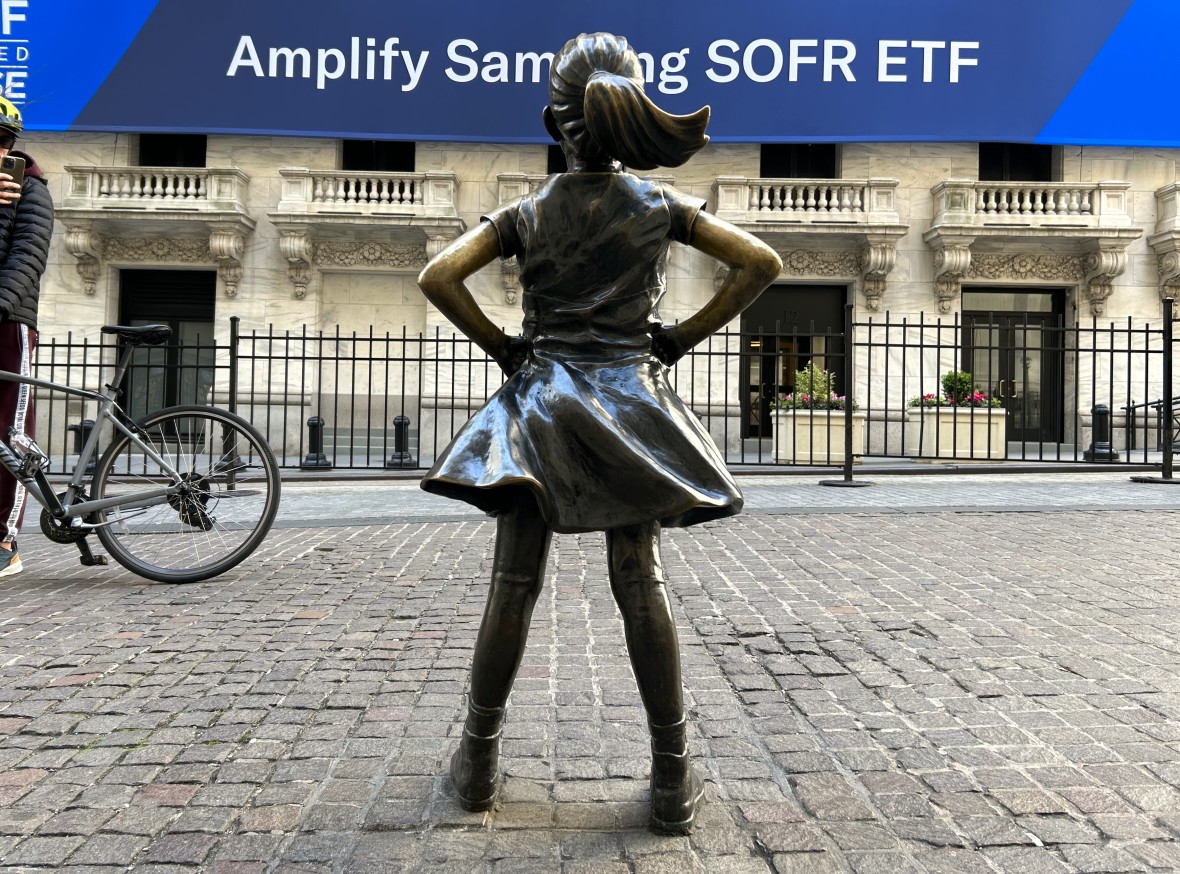
Charging Bull even prompted a sculpture in response: Fearless Girl, a four-foot-tall bronze statue originally placed opposite the bull in 2017 and later relocated to stand opposite the New York Stock Exchange, where it's become a tourist favorite.
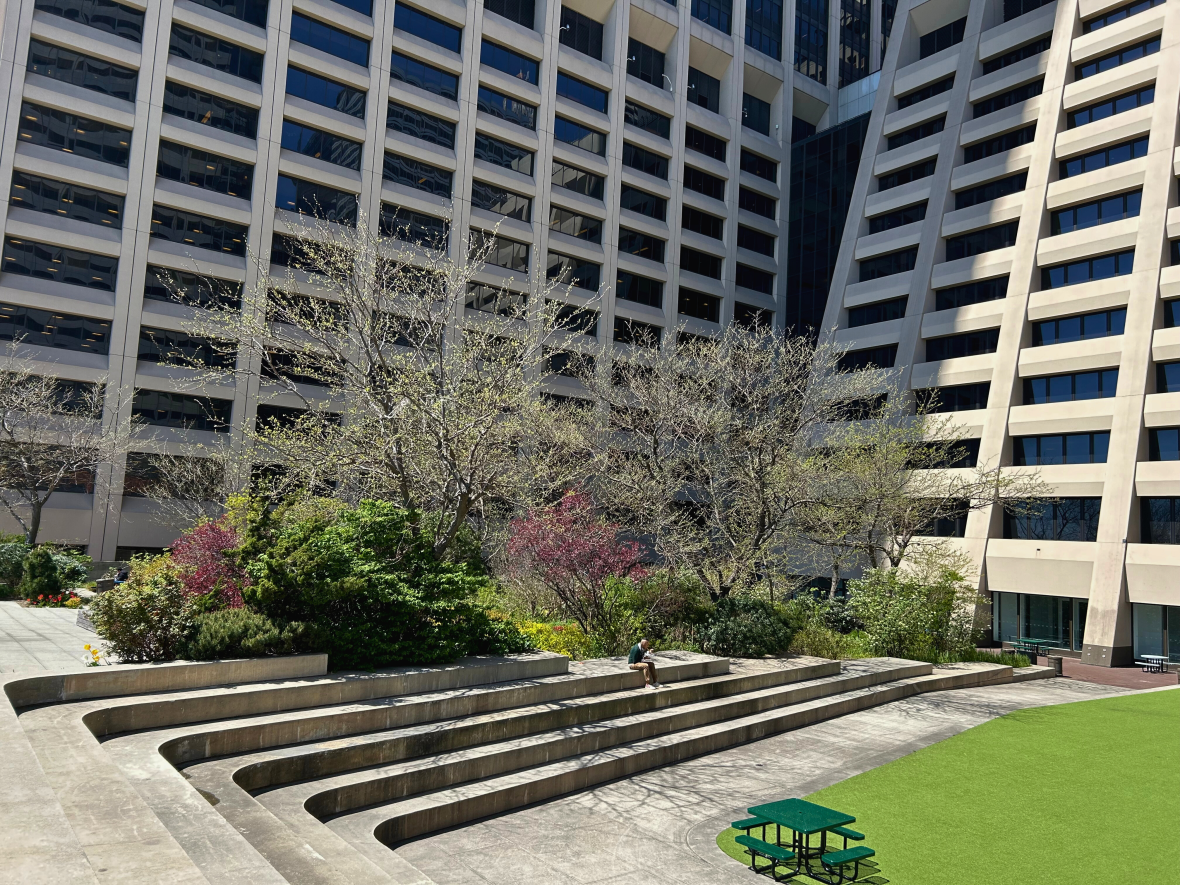
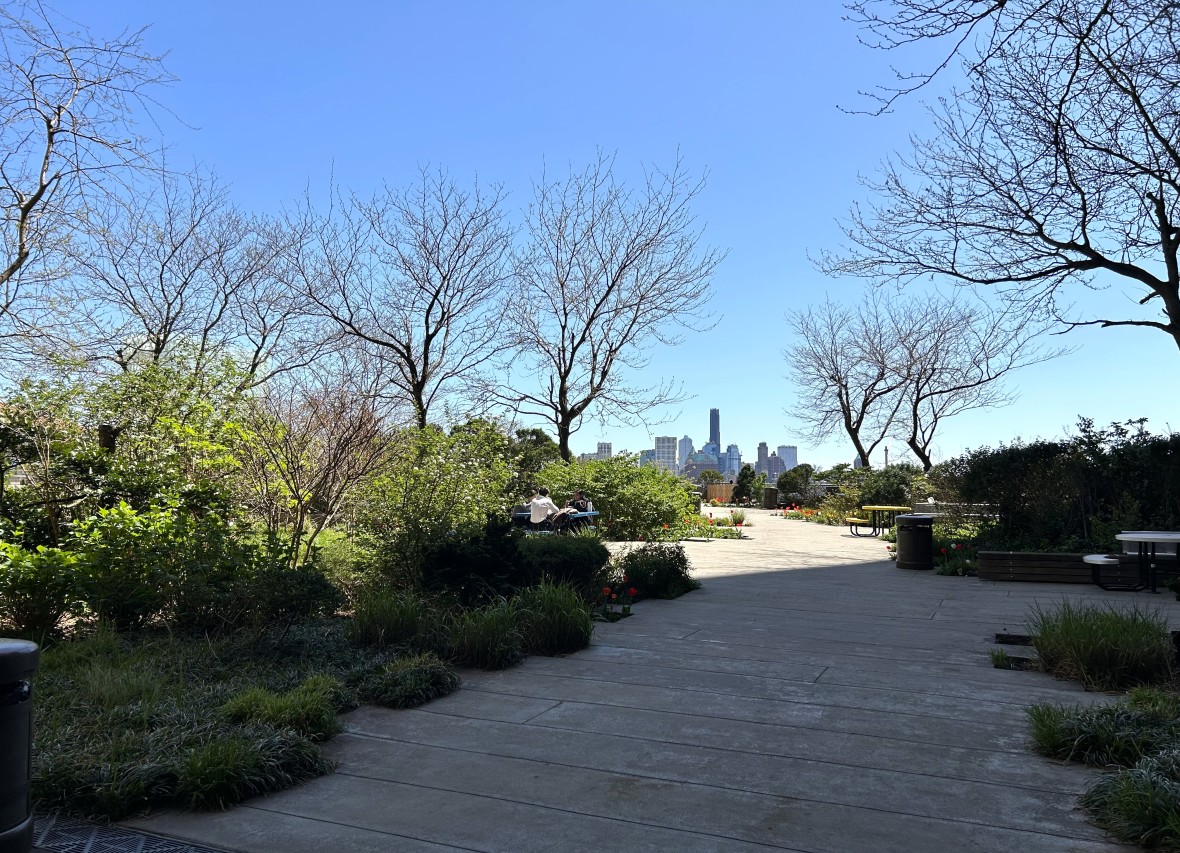
You can even find some greenery above street level down here, at the Elevated Acre (55 Water St). Take a couple of escalators up from the sidewalk to find a one-acre garden that has a courtyard, a beer garden, and secluded views of the East River. There are benches, tables and chairs if you want to grab some lunch and enjoy it in a small slice of nature.
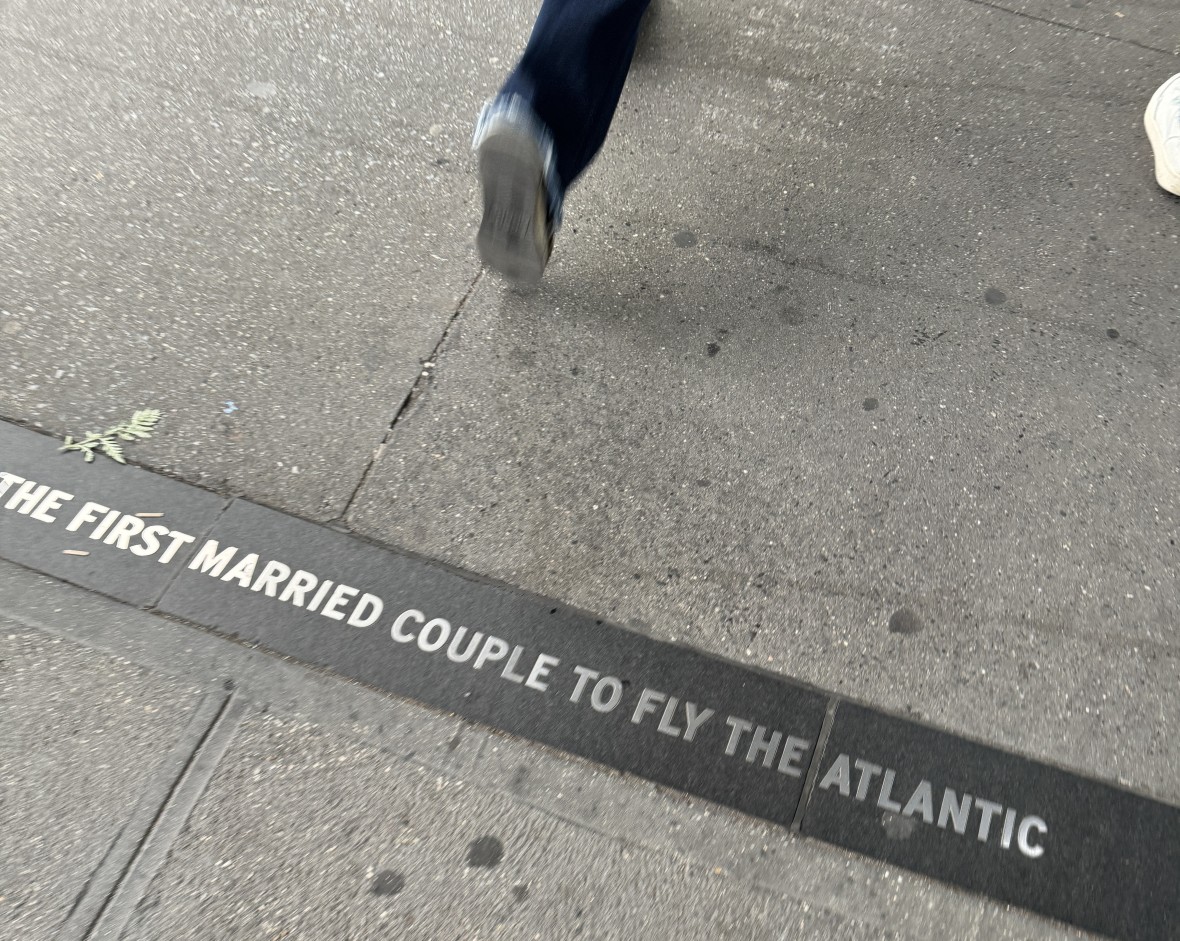
As you’re walking through the Financial District, your eyes will likely be fixed upwards at the skyscrapers above, but make sure to take a look down every now and again on Broadway, where you’ll see granite plaques commemorating the celebratory ticker-tape parades — 206 in all — that have gone from Battery Park to City Hall along what’s known as the Canyon of Heroes. Those honored include Charles Lindbergh, Jesse Owens, Winston Churchill, Queen Elizabeth II, the Apollo 11 astronauts, and several New York championship sports teams.
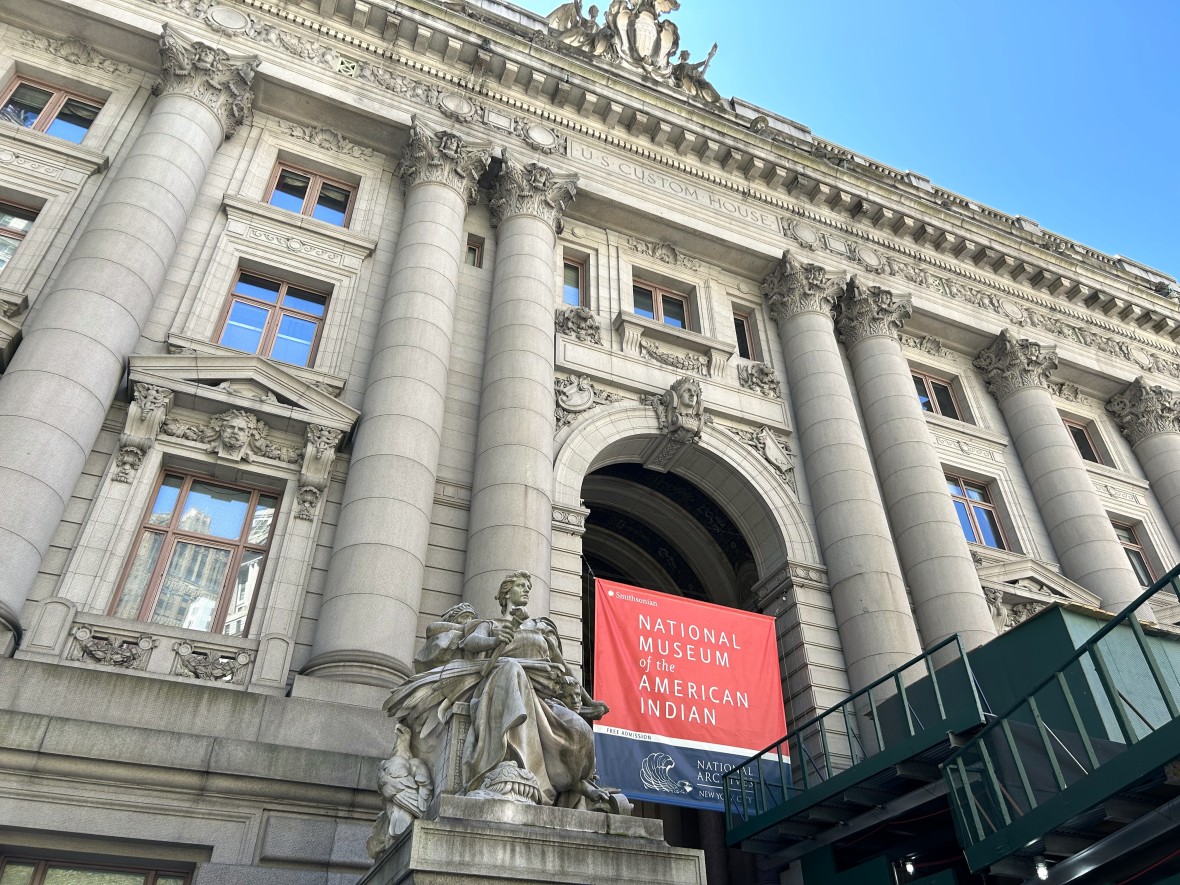
The Financial District is host to one of the city's newer museums: the National Museum of the American Indian, located next to Bowling Green in the Alexander Hamilton U.S. Custom House. Formerly located in Harlem, the museum, which features Native American art and artifacts, relocated to lower Manhattan in 1994 to take up residence in the Beaux Arts-style structure built in 1907 and that had been vacant since 1974.
TRANSIT HISTORY
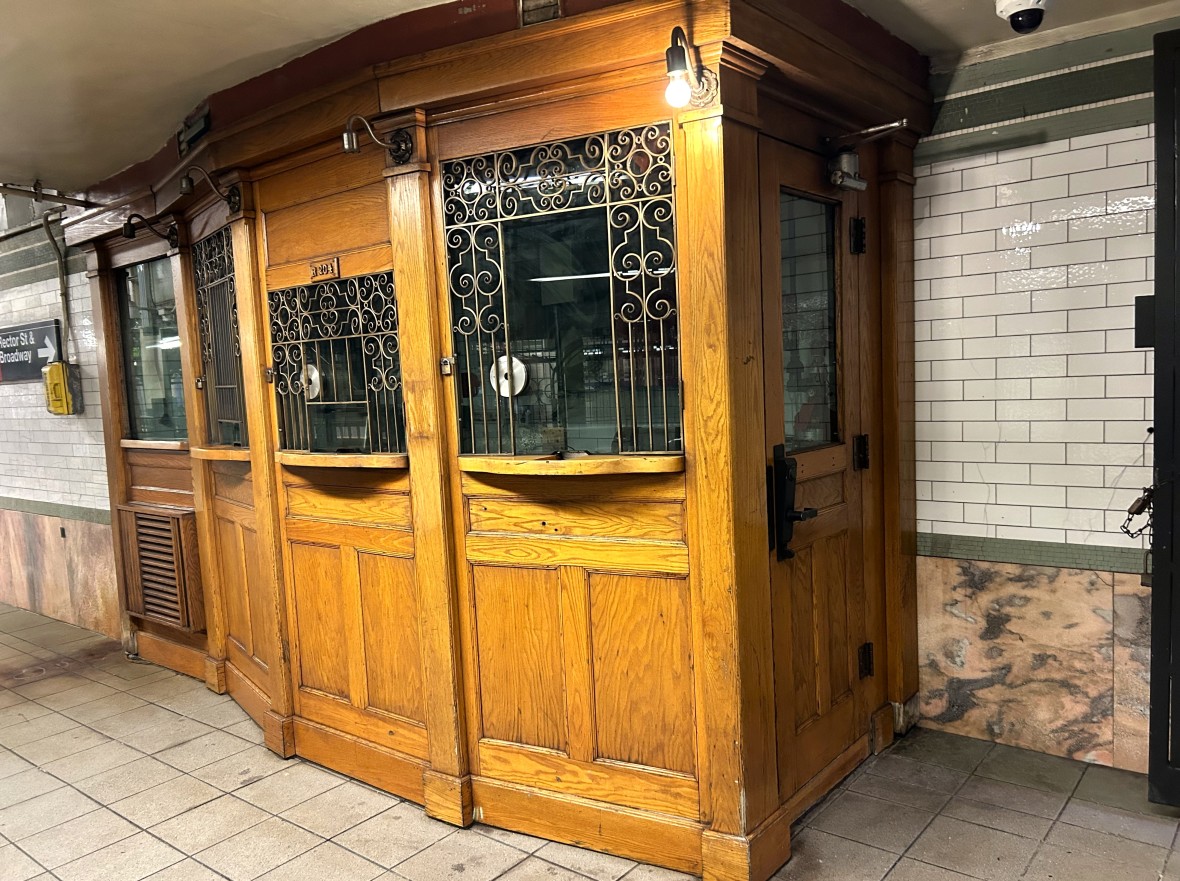
Want to see how New Yorkers got onto the subway before tokens, Metrocards and OMNY? On the southbound platform in the Wall Street 4/5 station, you can find an out-of-use but still standing wooden ticket-seller booth, where riders would have to purchase a pass from an attendant, dating back to the days of the Interborough Rapid Transit line. These booths were gradually phased out once tokens were introduced in 1953 and replaced by the more modern glass-and-metal versions you see today, but this one remains preserved as a part of subway history.
GETTING THERE
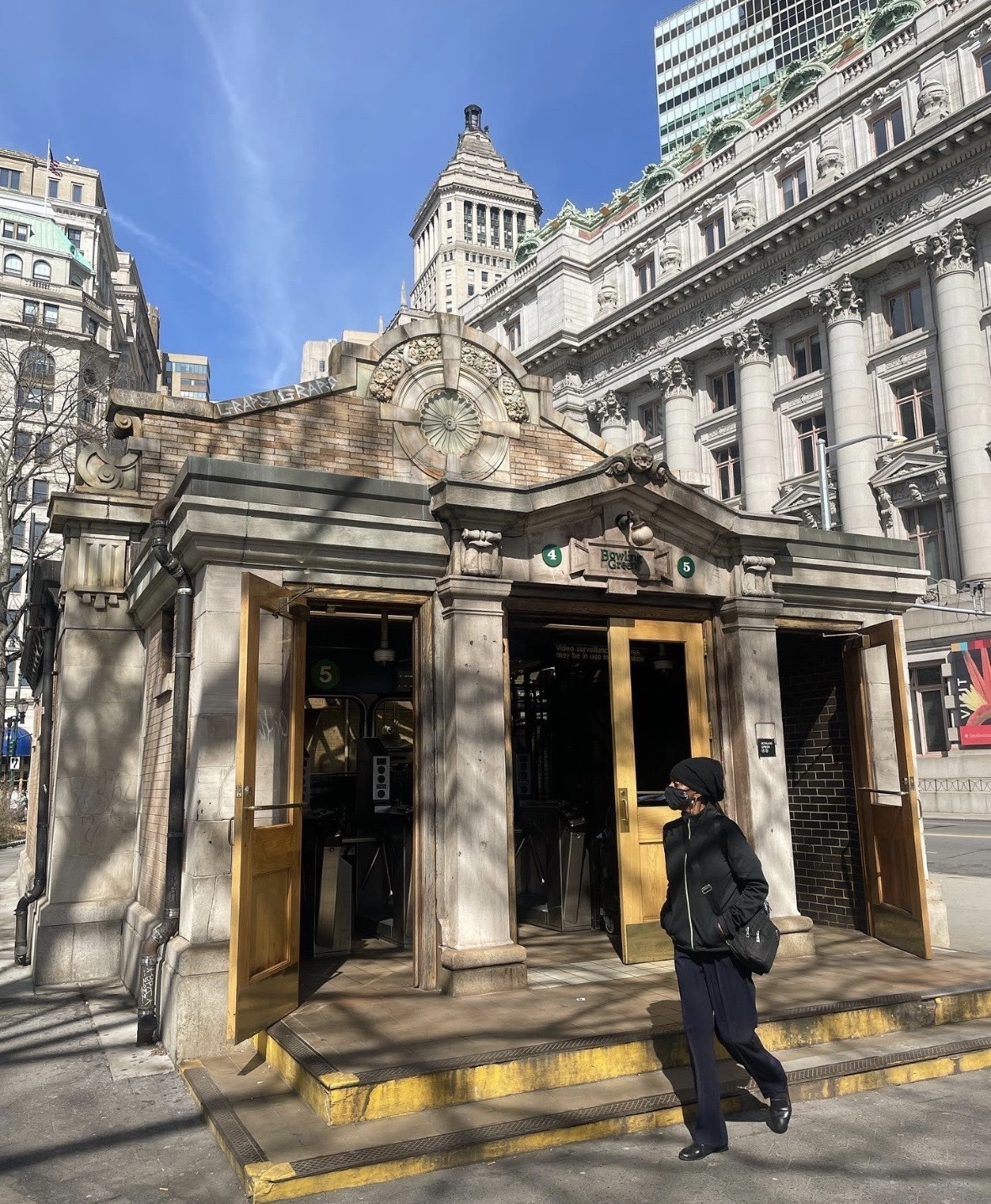
The Financial District is served by a surfeit of train lines, many of which terminate there. The 2, 3, 4, 5, A, C, J and Z trains will all take you to Fulton St, which is centrally located in the neighborhood. You can also take the 1 train to Rector St, WTC Cortlandt St, and South Ferry at the end of the line; the 2 and 3 express trains to Chambers St and Wall St; the 4 and 5 express trains to Wall St and Bowling Green; the E train to World Trade Center at the end of the line; the J train to Broad St (and the Z train at rush hour) at the end of the line; and the R and W trains to Cortlandt St, Rector St, and Whitehall St-South Ferry.



